SpringOne 2GX 2011
Chicago, October 25-28, 2011
Session Descriptions
Craig Walls - Author of Spring in Action
Spring Cleaning: Tips for Reducing XML in Spring Configuration
A common complaint about Spring is the vast amount of XML required to configure an application. In this presentation, I'll show you ways to reduce much of the XML required to configure Spring.
Spring for the Angle-Bracket Averse: Developing Spring Applications with Absolutely No XML
In this session, we'll explore ways of configuring Spring without involving XML. We'll start with an examination of JRuby and Groovy configuration mechanisms and then dig into Spring JavaConfig and see how to wire an entire Spring application together using annotations instead of XML.
Mark Richards - SOA and Integration Architect, Author of Java Message Service
Spring and JMS: Message Driven POJOs
The Java Message Service (JMS) provides an standard messaging API that allows you to send and receive messages using a variety of messaging providers (including Java EE application servers). The Spring Framework takes this abstraction one step further by providing an robust JMS messaging framework that greatly simplifies message processing. In this session we will see how to use the JMS Messaging Framework provided in Spring 2.5. I will start by describing Spring's overall messaging architecture and how to configure the various beans needed for messaging. Then, through interactive coding I will discuss and demonstrate Spring's JMS Template. which is used for sending messages and receiving messages synchronously. I will then discuss and demonstrate Message Driven POJOs, which are Spring's answer for asynchronous message listeners. After attending this session you will have all the necessary knowledge and code examples to use JMS in your Spring applications.
Pratik Patel - Enterprise Architect
Enterprise JPA 2.0 & Spring 3.0 - Tips and Tricks for JEE5 Persistence
As with many technologies, the basics are easy. The hard part comes when the developer needs to do sophisticated integration, development, and testing as part of an enterprise application. A large enterprise application requires the developer to think of issues that affect the development, scalability and robustness of the application. This presentation will cover the advanced topics described below.
A large enterprise application often will have several sub-projects that each contain their own JPA persistence unit. This opens up a number of questions around how to organize the persistence units and how the code between sub-projects should interoperate. Developers will gain insight into these issues and will see a couple of solutions using live code examples.
Kris Zyp - Development Associate with SitePen
Client/Server Application Development using JSON SOA/REST
JSON is rapidly becoming the standard means for data on the web, and service oriented architecture (SOA) and REST interfaces are proving to be the architecture of choice. By using existing and emerging format built on JSON for defining web services, developers can rapidly build and consume web services with high levels of modularity and reusability that can be provided by SOA and JSON in a web environment, and leverage the REST style architecture for scalable interoperable client/server interfacing. We will specifically look out we can use the Dojo JavaScript library to connect to these services.
Prerequisite: Certainly not required, but RESTful Web Applications with Spring 3.0 by Arjen Poutsma would be certainly help provide a good understanding of the Spring side of implementing RESTful services.
Ari Zilka - CTO and Co-Founder, Terracotta, Inc.
Terracotta - Real Apps, Real Frameworks, Real Use Cases
Writing enterprise Java apps can be a real drag. Apps should be simpler to build and run - doing so will save your company lots of money but, more importantly, it will help you avoid a lot of headaches.
You may already know about Terracotta, but this is not just another Terracotta / vendor presentation. We worked with customer use cases and built a real app using real frameworks. It is a fully functioning web application; it’s not just a demo but the app has security, MySQL and ORM, and even more! The source code is totally free and open source and is meant to teach Terracotta tire-kickers what it is like to live with our products as much as it is designed to give the community a springboard for creating apps that are simple to build and implement.
Come to this talk if you want to learn all the neat and cool ways we learned to offload the database. Come to this talk if you want to learn how to plug Spring Security, Webflow, MVC, and more into a Terracotta-based backbone. We will spend our entire time together on source code, the internals of Spring and how / what Terracotta is sharing underneath our app. Also, come to this talk if you want to learn what it takes to make Terracotta really scale. This web app we’ll showcase can talk to 50,000 concurrent users on 16 JVMs. We’ve gained a lot of knowledge about Spring, Terracotta, and web app development. We want to share it with you.
Do not come to this talk if you want to keep paying your vendor lots of money for your database and application server.
David Winterfeldt - SpringSource Software Engineer
Case Study: GWT & Comet Integration with the Spring Framework at NYSE Euronext ATS
This presentation will cover basic GWT (Google Web Toolkit) and Spring integration as well as more advanced integration using Comet for server side push. The advanced example will use Dojo's Comet Library with the Bayeux Protocol. GWT & Comet were investigated and chosen based on requirements to develop a new web based application to monitor trades that is as responsive as possible and can run in most browers without any plugins. GWT and Comet help address both of these requirements.
Kevin Whinnery - Technical Evangelist, Appcelerator, Inc.
Spring-loaded RIA with Appcelerator
This session will demonstrate how developers can rapidly front a Spring-powered service layer with the Appcelerator Rich Internet Application framework. Learn the basics of Appcelerator's message bus, which connects a HTML, CSS, and JavaScript based web client with back end services implemented using Spring Framework in a seamless message-oriented architecture. Learn to develop a browser-based RIA with as much (or as little) JavaScript as you would like with Appcelerator's Web Expression Language. Get things done right on the back end with Spring Framework, and get a rich, event-driven UI in the browser without needing to be a JavaScript guru.
Lucas Ward - Accenture Architect and Spring Batch Developer
Spring Batch 2.0 Overview
This presentation will discuss new features in the 2.0 release of the Spring Batch framework. These include enhancements made for Java 5, including annotations and parameterized types, along with other improvements that have been made based on community feedback.
Alexander von Zitzewitz - Founder and Managing Director, Hello2morrow
Golden Rules for Managing your Architecture
It is always beneficial for a project to define a clear software architecture. But how can you fight growing deviations between the planned architecture and the physical code base? How can you avoid expensive redesigns and refactoring phases? How can you achieve an outstanding technical quality of your code base? The session explains the basics concepts of architecture management for Java projects.
Greg Turnquist - Senior software engineer at SpringSource and Project Lead for Spring Python
Introduction to Spring Python
Spring Python is an offshoot of the Spring Framework and Spring Security module, targeted for Python. Spring provides many useful features, and I wanted those same features available when working with Python.
Spring Python offers many of the same useful features as Spring including: inversion of control, database template, transaction template, security, aspect oriented programming, and remoting.
These are useful tools in any programming language, and are the building blocks for enterprise applications. Code developers have used the Spring framework to leverage their development resources towards working on solutions for their problem space rather than plumbing code. This Spring extension gives users access to a pure python framework that solves many of the same problems.
While some parts of Spring have been ported, such as the formidable architecture of Spring Security, other things have been coded from the ground up using the dynamic nature of python, such as AOP. Everything has been coded to be succinct while providing the user with practical, usable tools to solve their problems.
Dave Syer - Lead of Spring Batch, SpringSource Principal Consultant
Scaling Batch Applications in the Enterprise
Batch and offline processing is a fact of life for many of us, and by its nature it often comes with deadlines and windows for processing. Sometimes the only way to make that deadline is to take a large job and throw more hardware at it. Unfortunately things aren't always that easy, and this presentation aims to show the design and architecture constraints that are imposed by scalability requirements, and some patterns for implementing scalable batch applications using Spring Batch. Of course not all jobs need to scale, and of those that do, some need to scale in different ways than others. The presentation also discusses those aspects of designing a batch application or batch system, so that developers and programme managers can be confident with their commitments to deadlines, and have some tools for capacity planning if things start to change.
Rossen Stoyanchev - Staff Engineer at SpringSource, VMware
Getting Hands-On with JavaScript and Browser Technologies
Ajax is a starting point for web application development today. But how comfortable are you with foundational browser technologies including modern HTML markup, DOM scripting with JavaScript, external design through CSS as well as related topics such as progressive enhancement, unobtrusive JavaScript, accessibility, and others?
Today's server-side developer has to break the ice and venture into client-side technologies and learn some good practices. For example it is common to separate style from the HTML and while you don't have to become a CSS expert you do need to understand what makes good HTML markup so that visual design can be successfully externalized and delegated to a designer if necessary.
Come to this session to learn what's important in web development today including both debugging techniques as well as a discussion of important design ideas for the client side. Design ideas will be presented in the context of Spring JavaScript and you will learn how it can help you to meet those design goals effectively.
Lessons Learned Applying Spring MVC 2.5
Version 2.5 of Spring MVC introduced a new programming model based on annotations. In the last year, best practices have emerged on how to use this programming model effectively. Attend this session to get an in-depth walk-through of the programming model, learn the best practices, and then see how to apply them on your project.
Randy Stafford - Consulting Solutions Architect
Inject this: Spring into Fusion Middleware
Oracle Fusion Middleware features a unique Hot-Pluggable architecture that integrates and extends the Spring Framework, making it easy to use in your custom applications. This session will highlight how products like Oracle Coherence, Oracle WebLogic Server, and Oracle Toplink, as well as open source persistence technology like EclipseLink can solve a wide range of problems for the enterprise developer.
Bruce Snyder - Co-Author of ActiveMQ In Action
Enterprise Messaging with ActiveMQ and Spring JMS
Systems based on messaging are increasingly being recognized for better handling of unpredictable changes as well as for scaling further than traditional tightly-coupled applications. Apache ActiveMQ is an open source message broker that supports JMS, provides client access from many different languages and offers many advanced features necessary for enterprise level messaging. The Spring JMS APIs greatly simplify JMS messaging by handling common scenarios for you. With these APIs, both synchronous and asynchronous messaging and also Message-Driven POJOs (MDPs) become very easy and are a perfect complement to ActiveMQ.
Mark Schwartz - Architect Manager, Aetna
Developing Spring applications for the WebSphere platform
Aetna has released more than 70 applications built on the Spring Framework and deployed on WebSphere since early 2006. In this presentation I will present options we considered in both the Spring Framework and the WebSphere platform for configuration, packaging, initialization, and management of these applications. I will also discuss some of the techniques we have used to introduce our development community to the Spring Framework.
Colin Sampaleanu - Original Spring Developer & Director of R&D, SpringSource
Leaving Legacy: Strategies (and Justifications) in moving to Spring
Organizations and individuals considering the use of Spring may face a number of concerns which can impact their ability to execute: there may be an existing legacy codebase which needs to be migrated, a lack of familiarity with the new technology, or a need to justify the use of Spring instead of continued use of older technologies or use of other alternatives.
This session focuses on strategies and justifications when moving from legacy technologies such as full stack Java EE 1.4 or earlier (with or without EJB 2.x) to the Spring platform. This session will also be of use for those considering the use of Spring with or without full stack Java EE 5.
John Rymer - Vice President, Principal Analyst Forrester Research
Life in a Time of Consolidation: The Platform Market in 2009-10
IBM and Oracle are now the big dogs in Java middleware, and Microsoft's enterprise onslaught is generating double-digit .NET growth in a down economy. Game over, right? Not at all. All three vendors must overcome their inherent complexity and high costs of their suites in a market that increasingly rewards platforms with strong fit-to-purpose, high configurability, low costs. Open source is growing as a factor in the market, not shrinking. This speech will outline the directions, drivers, and likely outcomes of the platform market in this time of vendor consolidation.
Jared Rodriguez - Founder and CTO of Skyway Software
Skyway Generation Framework for Spring
Learn how to accelerate the delivery of Spring applications using the Skyway Generation Framework for Spring. This session will focus on how developers are using Skyway’s Domain-Specific Language (DSL) and Spring-certified code generation capabilities to design, develop and maintain Spring applications. The session will also demonstrate how the modularity of the Skyway Generation Framework for Spring enables users to generate Spring code and artifacts as an end-to-end solution or for individual Spring Framework modules (Spring MVC, ORM, DAO, Service, Core).
Graeme Rocher - Head of Grails Development for SpringSource
Grails for Spring Developers
In this talk the Grails project lead, Graeme Rocher, introduces a new way to develop web applications with the Spring framework. The Grails web application framework, based on the Groovy language with powerful Spring underpinnings, is lowering the barrier of entry to Java EE development with Spring.
Thomas Risberg - co-author of "Professional Java Development with the Spring Framework"
Effective Use of the Oracle Database with Spring
In this talk we will look at some advanced features of the Oracle Database that most developers overlook. This includes the native XML data type, Advanced Queuing for messaging and transparent auditing of database changes.
During the presentation the features will be shown in live code and we will walk through three complete examples utilizing the discussed features.
One example will show how to use triggers and Advanced Queuing to monitor changes made to the database. Another example shows how we can persist domain objects as XML data using JAXB and Oracle's XMLType. A third example shows how we can create an audit trail in the database by propagating the web application principal information to the database and logging any changes made to database tables.
We will also discuss how the Advanced Pack for the Oracle Database can make these tasks a lot simpler, both in terms of development effort and for configuration.
Persistence Tuning for your Spring Applications
This talk will discuss a variety of issues you should consider when tuning the persistence layer of your Spring applications.
We will discuss SQL tuning, JDBC tuning and to some extent database tuning. We will also look at the unique issues encountered with ORM tools like Hibernate and EclipseLink. One issue covered in detail is the performance impact of eager vs. lazy loading.
To tune ORM tools, you need to be able to capture the generated SQL. We will show some useful tools that can help with this.
Yan Pujante - Distinguished Software Engineer at LinkedIn
Case Study: Spring at LinkedIn
At LinkedIn, we have been using Spring (very extensively) for several years. Our application uses over 1000 spring files for the configuration and wiring of all the components of the system. In this session I will present the problems we were trying to solve when we decided to use Spring as a solution and how we extended Spring to suit our particular needs (through the standard xml extension mechanism introduced with Spring 2.0).
Arjen Poutsma - Founder & Project Lead for Spring Web Services
Implementing and Consuming RESTful Web Services
REST, the REpresentational State Transfer, is the architectural style underlying the HTTP protocol. In the last couple of years, REST has emerged as a compelling and simpler alternative to SOAP/WSDL/WS-*-based distributed architectures. In this session, Arjen will focus on REST from the perspective of a web service developer, using Spring MVC.
RESTful Web Applications with Spring 3.0
One of the major new themes of Spring 3.0 is the support for REST in Spring MVC. In this session, Arjen will investigate these features from the perspective of a web application developer. Attend this session to learn about URI templates, content-negotiation, and other RESTFul concepts.
Mark Pollack - Founder Spring.NET
Java/.NET interopability with Spring and Spring.NET
In this session we will show various approaches to interopability between Java and .NET using the Spring framework on both sides to provide a consistent programming model. Examples showing interopability using web services, REST, and message oriented middleware will demonstrated with a .NET client and Java based servers including the SpringSource Application Platform.
Spring for .NET - New Feature Update
The Spring for .NET 1.2 release introduced several important new features. This session gives provides an in depth demonstration of those features including messaging (MQMQ, ActiveMQ), WCF integration, and scheduling support using Quartz.NET. The Spring for .NET 2.0 roadmap will also be discussed.
Patrick Peralta - Oracle Software Enginer and Coherence Specialist
Inject this: Spring into Fusion Middleware
Oracle Fusion Middleware features a unique Hot-Pluggable architecture that integrates and extends the Spring Framework, making it easy to use in your custom applications. This session will highlight how products like Oracle Coherence, Oracle WebLogic Server, and Oracle Toplink, as well as open source persistence technology like EclipseLink can solve a wide range of problems for the enterprise developer.
Glyn Normington - Distinguished Engineer, SpringSource
Advanced SpringSource dm Server
Following on from the Introduction to the SpringSource dm Server session, Project Lead Rob Harrop and SpringSource Distinguished Engineer Glyn Normington will discuss advanced dm Server use cases and internals.
Prerequisite: Introduction to the SpringSource dm Server
Building Large-Scale, Modular Software
In this session, SpringSource dm Server Project Lead Rob Harrop and SpringSource Distinguished Engineer Glyn Normington will discuss the design and implementation of large-scale, modular software using the dm Server as a case study.
Jim Moore - SpringSource Senior Consultant
Testing Strategies and Techniques
Spring was created largely in response to the desire to be able to test the code we write in the enterprise. Surprisingly, this is still a novel idea to many people. We will explore some of the ways that Spring facilitates testing and associated design in your applications across the Spring Portfolio, such as Spring Batch, Spring Web Flow, and more. As a great side-benefit, we will see how (in a cursory way) the various Spring projects work.
Russell Miles - Russ Miles is a senior consultant and project lead at SpringSource
Introduction to Spring Extensions
Spring Extensions, in a nutshell, are open source projects that extend the core Spring portfolio projects. The goal is to create high quality, popular and well documented extension projects to Spring, each with their own identity and release cycle.
Each Spring Extension represents a discrete and useful product that SpringSource customers can be assured, once those projects hit a specific level of maturity, meet the high quality bar normally associated with the Spring Portfolio projects.
Each project is lead by members of the Spring Community along with a SpringSource sponsor whose job is to guide the project to its full potential, promoting the extension internally and to clients and making sure that the extension gets the maximum benefit from being associated with the strong SpringSource brand.
Richard McDougall - Principal Engineer in the Office of the CTO, VMWare
VMware Virtualization Makes Java Application Development and Deployment Easier
If you’re curious about the ways virtualization can be used in Java development and deployment, you’ll want to attend this session. VMware principal engineer Richard McDougall discusses the new SpringSourceTool Suite integration with the VMware Workstation Eclipse plug-in that lets you seamlessly move Java application code into a VMware virtual machine with a few mouse clicks, speeding application development, testing, and debugging. You’ll learn how VMware virtualization technology provides cost advantages and deployment flexibility for runtime deployments of lightweight, modular server architectures from Spring - on desktops, in data centers or in virtualized grid or cloud environments. Best practices for running Java workloads in VMware virtual machines will be included in the presentation as well.
Wayne Lund - Accenture Solution Architect
Maximizing Architecture Reuse for High Performance
Learn how you can maximize your success with reusable, industrialized architectures. This session will focus on how Accenture integrates standard processes, tools, and architectures to enable full-scale industrialization for high performance. It will also highlight some of the recent steps Accenture has taken with SpringSource to enable accelerated development through standardized development environments and runtime architectures supporting web online, batch and integration application style development for client solutions.
Mat Lowery - Software Engineer, Pentaho
Architecting scalable reporting and business intelligence applications using Spring and Pentaho
This session will discuss technology and techniques for Spring developers to create scalable reporting and business intelligence (BI) applications using technologies from Springsource and Pentaho. It will briefly review Pentaho’s technical capabilities and then focus on application design, integration, and deployment along with some interesting real-world use cases and customer examples.
John Lewis - Core Developer of Spring Portlet MVC
Building Java Portlets with Spring MVC
This session will provide a complete tour of using the Spring MVC framework to build Java Portlets. It will include an in-depth review of a sample portlet application developed using the latest features of Spring MVC, including Annotation-based Controllers. If you are writing Portlets and using Spring, this session is for you.
Costin Leau - Lead, Spring GemFire, Hadoop, Redis
Lessons Learned Modularizing Java Applications with OSGi
Modularity, versioning and dynamics make OSGi an ideal candidate for deploying and running Java applications, whether small or large. However, nothing comes for free and resource and, like in any other environment, there are "do"s and "don't"s. In this session, we'll start by looking at OSGi (plus HK2 and JAM while we're at it) and then focus on some of challenges that one might encounter when developing an enterprise application in OSGi and how they can be addressed, using the lessons learned in Spring Dynamic Modules project and SpringSource Application Platform.
Spring Dynamic Modules Update
Spring Dynamic Modules (or Spring-OSGi) project makes it easy to build Spring applications that run inside an OSGi environment. This allows the application to provide better separation of modules, the ability to dynamically add, remove and update modules in a running system as well as deployment of multiple versions simultaneously.
Ramnivas Laddad - Author of AspectJ in Action, Principal at SpringSource
Making sense of AOP choices
One-size-fit-all fits nothing! Just one kind of AOP won't fit all applications, either. Therefore, there are many choices available when using Spring-AspectJ combination. First, there is a choice about AOP system: proxy-based AOP or bytecode-based AOP. Then there is a syntax choice: traditional AspectJ, @AspectJ, and XML syntax. Within bytecode-based weaving, there are weaving choices: build time weaver or load-time weaver (LTW). If you choose LTW, you have further choices of AspectJ agent-driven or Spring-driven LTW. Confused? Don't be. These choices, while confusing at first, exists for a reason. This session explores all these choices and provides guideline on choosing the right combination to make you successful with AOP.
Mark Kralj-Taylor - Lead of Java Application Infrastructure at Morgan Stanley
Case Study: Morgan Stanley Spring Usage
This session will explore how and why Spring is being used at a large financial institution. At Morgan Stanley we use Java a lot: What kinds of systems do we develop in Java? Why did we decide to use Spring? What problems did Spring solve for us? How did we adopt Spring across a large enterprise, for established projects as well as for new developments?
Kirk Knoernschild - Software Developer & Mentor
Examining the OSGi Marketplace
The OSGi Service Platform is a standard dynamic module system for Java. Already under adoption by most major platform vendors, OSGi is a disruptive technology that stands to transform the packaging, delivery, and management of Java applications and services. Extending the capabilities of the Java platform, OSGi supports the ability to deploy multiple versions of a module, discover new modules dynamically, and deploy modules without restarting the system. In this session, analyst Kirk Knoernschild will introduce the OSGi Service Platform, examine the current OSGI market, and explore OSGi's place in the next generation Java application platform.
Mik Kersten - CEO of Tasktop, Creator of the Eclipse Mylyn Project
Enterprise Development Tools for Spring Applications
Spring IDE is the proven standard toolset for doing Spring development within the Eclipse Platform. It supports Spring's core programming model and the board range of open-source Portfolio Products. With the SpringSource Tool Suite additional value-added features have been introduced that combine Spring IDE and Eclipse Mylyn to significantly streamline the development process and help making SpringSource best-practice knowledge and recommendations available to developers at their fingertips while working in their IDE. This session will introduce the different tool products from SpringSource and will outline their benefits.
Jack Kennedy - Founder and VP of Product Delivery, Skyway Software
Skyway Generation Framework for Spring
Learn how to accelerate the delivery of Spring applications using the Skyway Generation Framework for Spring. This session will focus on how developers are using Skyway’s Domain-Specific Language (DSL) and Spring-certified code generation capabilities to design, develop and maintain Spring applications. The session will also demonstrate how the modularity of the Skyway Generation Framework for Spring enables users to generate Spring code and artifacts as an end-to-end solution or for individual Spring Framework modules (Spring MVC, ORM, DAO, Service, Core).
Juergen Hoeller - Co-founder of the Spring Framework Project
Spring and Java EE 6
The Spring Framework is well-known for tight integration with the J2EE 1.4 and Java EE 5 platforms. Now Java EE 6 is coming our way... Where are new integration opportunities emerging? How does Spring differentiate itself from the new programming models in Java EE 6 - in particular from Web Beans? Where is the Spring component model compatible with the direction that Java EE 6 is taking? This talk will provide an early analysis and give an outlook on how the Spring Framework will adopt Java EE 6 APIs in the course of 2009.
What's New in Spring Framework 3.0
With the Spring Framework 3.0 release, we are introducing further annotation-based configuration options, unified expression language support and comprehensive REST support. This talk discusses Spring as a modern Java 5 oriented application framework: covering the core component model, annotation-driven web MVC as well as platform integration.
Pete Higgins - Project Lead of the Dojo Toolkit and Support Lead for SitePen, Inc
The Dojo Toolkit: From Zero to Production
The Dojo Toolkit provides professional tools for all your Rich Web(tm) requirements, ranging from a minimal set of utility functions for everyday Web Development to cutting edge client-side technology including a full suite of tools for every step of development. We'll cover the lightweight Base Dojo utility functions provided by the the 26k dojo.js, explore the benefits of Dojo's package and loader system, Widgeting framework, pre-made UI widgets, DojoX components in incubation like Charting, Cometd/XMPP, SMD, among others, and finish up by showing how the Dojo Build system can shave every last available byte on the wire down to a minimal collection of client-side code. From progressive to dynamic, Dojo provides all the tools needed within a single unified API to get you going -- from zero to production.
Jennifer Hickey - Senior Software Engineer at SpringSource
Managing Spring Applications in the Cloud
This session shows a practical application of cloud computing using multiple new SpringSource products. It demonstrates a set of actual applications, including SpringSource dm Server and AMS, working together in multiple virtual nodes.
Managing your Applications with SpringSource AMS
Is your application feeling neglected? Once you deployed it into production, did you drift apart? Perhaps you abandoned your deployed application for some hot new project? Come to this session to learn how to use the SpringSource Application Management Suite (AMS) to reconnect with your Spring-powered application in both development and production environments. We will explore how AMS uses AOP and JMX to provide automatic discovery, monitoring and runtime control of a variety of Spring components. Attendees will learn how to use the AMS API to easily build manageability into their own application components. Attend this session and learn how to break down those communication barriers and gain new insight into your application.
Rob Harrop - Core Spring developer and author of the best seller Pro Spring
Advanced Concurrency: Design and Construction
Following on from his popular concurrency session from last year, Rob will present a hardcore discussion of concurrency in Java and beyond.
Attendees will learn about:
- Concurrency in Java 6 and Java 7
- Patterns for concurrent applications
- Design considerations and pitfalls
- Concurrency beyond Java including Kilim, Erlang and Scala
- Diagnosing concurrency bugs
Attendees should have a thorough understanding of Java SE.
Advanced SpringSource dm Server
Following on from the Introduction to the SpringSource dm Server session, Project Lead Rob Harrop and SpringSource Distinguished Engineer Glyn Normington will discuss advanced dm Server use cases and internals.
Prerequisite: Introduction to the SpringSource dm Server
Building Large-Scale, Modular Software
In this session, SpringSource dm Server Project Lead Rob Harrop and SpringSource Distinguished Engineer Glyn Normington will discuss the design and implementation of large-scale, modular software using the dm Server as a case study.
Introduction to the SpringSource dm Server
The SpringSource dm Server is the next-generation modular middleware platform. In this session, Project Lead Rob Harrop and SpringSource CTO Adrian Colyer will present a rapid, hands-on introduction to the dm Server.
Filip Hanik - Senior Software Engineer, SpringSource.
Heterogeneous Cluster Communication
Many group communications modules are built for a uniform communication model. In many cluster implementations this is often not the best solution to achieve the performance and scalability that is needed in heterogeneous clusters. This presentation will introduce a Tomcat module, nicknamed Apache Tribes, that has addressed the need to support messaging with different attributes per message and is used in the next version of Tomcat Clustering.
Zero Latency Http - Using Comet with Apache Tomcat
As browsers and web servers have become de facto standards, the need for instantaneous data exchange has grown. AJAX was one of the responses for a web client to efficiently communicate asynchronously in the background with a remote web server. Tomcat 6.0 has gone beyond AJAX and implemented a new feature called Comet, allowing for both asynchronous uni- and bi-directional communication between client and server while still leveraging the HTTP protocol and Java Servlets. The Comet technique has also been nicknamed "Zero Latency HTTP" as it circumvents the overhead by the traditional request/response methodology that the protocol implies.
Jeremy Grelle - Senior Software Engineer, SpringSource
Enhancing Spring MVC Web Applications Progressively with Spring JavaScript
Spring JavaScript is a JavaScript abstraction framework that allows you to progressively enhance a web page with behavior. The framework consists of a public JavaScript API along with an implementation that builds on the Dojo Toolkit. Spring.js simplifies the use of Dojo for common enterprise scenarios while retaining its full-power for advanced use cases. Come to this session to learn to use Spring.js and Dojo to create compelling user interfaces for your Spring MVC web applications.
Integrating Flex and Spring
Flex offers several ways to communicate remotely from the client to a back-end system, but it is ultimately agnostic to the technology being used on the server. Connecting a Flex front end to a Spring-based service layer has long been possible, but it hasn't always been easy or obvious how to do so without a heavy investment in proprietary technology. Come to this session to see how to take advantage of the recently open-sourced BlazeDS project from Adobe to make connecting Flex to Spring easier and more natural.
Simplifying JavaServerFaces Development with Spring Faces
Traditional JSF development has gained a reputation for being overly complex and cumbersome. Spring Faces introduces a host of features that improve the development experience and performance a JSF application. In this session, attendees will see a real-time demonstration of how Spring Faces makes the JSF experience more productive and reduces the pain of container re-starts and verbose configuration.
Adam Fitzgerald - Director of Developer Relations, SpringSource
Enterprise Apache Tomcat
Apache Tomcat is the most popular Java application server in production today. This session will discuss the usage patterns of Apache Tomcat and the most common issues that arise when it is used in enterprise environments. The goal of the presentation is to introduce and demonstrate useful production tools to help to ensure quality performance of Tomcat in mission critical systems.
Mark Fisher - Spring Integration Lead
Introduction to Spring Integration
Spring Integration was officially announced at The Spring Experience last year, and since then we have released 1.0. Attend this session to learn what Spring Integration is all about and how you can get started using it right away.
Spring Integration Deep Dive
Intended for those who have already attended the "Introduction to Spring Integration", this session offers an intensive, demo-driven exploration of Spring Integration's advanced configuration options and extension points.
Prerequisite: Introduction to Spring Integration
Mike Evans - VP, Enablement and Support, Skyway Software
Skyway Generation Framework for Spring
Learn how to accelerate the delivery of Spring applications using the Skyway Generation Framework for Spring. This session will focus on how developers are using Skyway’s Domain-Specific Language (DSL) and Spring-certified code generation capabilities to design, develop and maintain Spring applications. The session will also demonstrate how the modularity of the Skyway Generation Framework for Spring enables users to generate Spring code and artifacts as an end-to-end solution or for individual Spring Framework modules (Spring MVC, ORM, DAO, Service, Core).
Justin Edelson - VP, Applications and Platforms, MTV Networks Global Digital Media
Case Study: Migrating to Spring at MTV Networks
This case study analyzes the enterprise architecture migration to Spring at MTV Networks Digital. The presentation covers details about how Spring was chosen to replace ATG Dynamo and provides an architectural comparison. The session also identifies practical lessons learned during the migration and how other architects of large enterprise systems can leverage them for their own projects.
Christian Dupuis - Lead, SpringSource Tool Suite and Spring IDE
Enterprise Development Tools for Spring Applications
Spring IDE is the proven standard toolset for doing Spring development within the Eclipse Platform. It supports Spring's core programming model and the board range of open-source Portfolio Products. With the SpringSource Tool Suite additional value-added features have been introduced that combine Spring IDE and Eclipse Mylyn to significantly streamline the development process and help making SpringSource best-practice knowledge and recommendations available to developers at their fingertips while working in their IDE. This session will introduce the different tool products from SpringSource and will outline their benefits.
Keith Donald - SpringSource Principal & Founding Partner
Developing Rich Web Applications with Spring
Spring offers several interesting modules for building and running rich web applications: Spring MVC, Spring Web Flow, Spring JavaScript, and Spring Faces. This session will provide an overview of these modules and show how they relate to one another. Attendees will see how Spring simplifies the development and deployment of rich web applications on containers like Tomcat, as well as on Spring's new application server. Attendees will also gain insight into the Spring 3.0 roadmap, including exciting new REST, JSON, and Flex support.
Hands-on Workshop: Developing Rich Web Applications with Spring
In this session, attendees will interact with the speaker to create a web application powered by Spring MVC 3.0. Bring your laptop to this session to get hands on experience with Spring.
Working with Spring Web Flow 2
Web Flow is a Spring Web MVC extension that allows you to define Controllers using a higher-order domain-specific-language. This language is designed to model user interactions that require several requests into the server to complete, or may be invoked from different contexts. This session dives deep into the features of the Web Flow 2 definition language, and illustrates how to use it to create sophisticated controller modules.
Michael Chen -
Inject this: Spring into Fusion Middleware
Oracle Fusion Middleware features a unique Hot-Pluggable architecture that integrates and extends the Spring Framework, making it easy to use in your custom applications. This session will highlight how products like Oracle Coherence, Oracle WebLogic Server, and Oracle Toplink, as well as open source persistence technology like EclipseLink can solve a wide range of problems for the enterprise developer.
Chris Beams - Spring Framework Committer
Introducing Spring Java Configuration
Spring Java Configuration, or JavaConfig for short, provides a pure-Java and type-safe mechanism for configuring the Spring IoC container. This approach provides the benefits of centralized dependency injection with the power and ease of working in Java and without the angle brackets of XML.
Scott Andrews - Software Engineer
Eating Your Own Dog Food: Spring Inside the Enterprise Bundle Repository
The SpringSource Enterprise Bundle Repository is a OSGi-compliant Maven artifact repository with a rich front-end user interface. This mission-critical application is also built on the latest version of Spring, and serves as a good example for Spring best practice (and lessons learned for non-best practices). Come to this session to see how this innovative application works and how it applies the latest Spring technologies.
Ben Alex - Creator of Spring Security, Spring Roo & SpringSource Principal S/W Engineer
Introducing Spring Security 2.5
Does your application need security? If so, you'll find this intensely demonstration-oriented session provides an easy introduction to the popular Spring Security project, and how to apply it to web applications. You'll discover the three easy steps to adding Spring Security to an existing application, how to configure some of your main authentication services, and how to use both web and method authorization capabilities. You'll also receive plenty of pragmatic security tips, plus see demonstrations of the exciting new Spring Security 2.5 expression language (EL) features.
 Author of Spring in Action
Author of Spring in Action
Craig Walls has been professionally developing software for over 17 years (and longer than that for the pure geekiness of it). He is a senior engineer with SpringSource as the Spring Social project lead and is the author of Spring in Action and XDoclet in Action (both published by Manning) and Modular Java (published by Pragmatic Bookshelf). He's a zealous promoter of the Spring Framework, speaking frequently at local user groups and conferences and writing about Spring and OSGi on his blog. When he's not slinging code, Craig spends as much time as he can with his wife, two daughters, 4 birds and 3 dogs.


 SOA and Integration Architect, Author of Java Message Service
SOA and Integration Architect, Author of Java Message Service
Mark Richards is a Director and Senior Architect at Collaborative Consulting, LLC, a Boston-based Business and Architecture Consulting Firm, where he is involved in the architecture, design, and implementation of SOA, EDA, messaging, and other architectures, primarily in the Java platform. Prior to joining Collaborative Mark was an Executive IT Architect with IBM, where he worked as an SOA and enterprise architect in the financial services area. He has been involved in the software industry since 1984 and has many battle scars to show for it. Mark served as the President of the Boston Java User Group in 1997 and 1998, and the President of the New England Java Users Group from 1999 thru 2003. Mark is the author of the book Java Message Service (2nd edition) from O'Reilly. He is also the author of Java Transaction Design Strategies, contributing author of the book 97 Things Every Software Architect Should Know from O'Reilly, contributing author of NFJS Anthology Volume 1, and contributing author of NFJS Anthology Volume 2. Mark has many architect and developer certifications, including those from IBM, Sun, The Open Group, and Oracle. He is a regular conference speaker at the No Fluff Just Stuff Symposium Series and speaks at other conferences and user groups around the world. When he is not working Mark can usually be found hiking with his wife and two daughters in the White Mountains or along the Appalachian Trail.


 Enterprise Architect
Enterprise Architect
Pratik Patel wrote the first book on 'enterprise Java' in 1996, "Java Database Programming with JDBC." He has also spoken at various conferences and participates in several local tech groups and startup groups. He's the CTO of Atlanta based TripLingo (http://www.triplingo.com/)
Pratik's specialty is in large-scale applications for mission-critical and mobile applications use. He has designed and built applications in the retail, health care, financial services, and telecoms sectors. Pratik holds a master's in Biomedical Engineering from UNC, has worked in places such as New York, London, and Hong Kong, and currently lives in Atlanta, GA.


 Development Associate with SitePen
Development Associate with SitePen
Kris Zyp is a research and development associate with SitePen, a forward-thinking company that is committed to building and enhancing the open web. He represents the Dojo foundation on the EcmaScript 4 committee. Kris is the lead developer of the Persevere project and the JSON Schema format. He is actively researching and developing technologies in Ajax REST client/server architecture, JSON-RPC, JSONPath, JSON Referencing, and JavaScript persistence. He is also a contributor to Comet Daily and is working on RESTful HTTP Comet approaches.


 CTO and Co-Founder, Terracotta, Inc.
CTO and Co-Founder, Terracotta, Inc.
Ari Zilka founded Terracotta in 2003 and is the company’s Chief Technology Officer. Combining business and technology leadership, Ari was an Entrepreneur-in-Residence at Accel Partners and worked at PriceWaterhouseCoopers with some of the world’s leading brands. He was Chief Architect at Walmart.com where he built and led a team of core engineers. And in the mid 1990s, Ari invented a new object relational database that still exceeds the capabilities and performance of database technology today


 SpringSource Software Engineer
SpringSource Software Engineer
David works at SpringSource as a Senior Engineer. He is working on a Flex application for a cloud product and is also on the Spring Web Team.
David has been doing software development for over 15 years. He's been using Java since 1998 and involved in using Open Source almost as long. He's an Apache committer on Struts and Commons Validator, as well as the creator of Commons Validator (although currently no longer active on either). David has focused on Web and Enterprise development for most of his career, and started working with the Spring Framework in 2006.
David runs the website Spring by Example, which is a site for sharing Spring examples. David expects this site will become a general resource for Spring Examples and ultimately save developers time.


 Technical Evangelist, Appcelerator, Inc.
Technical Evangelist, Appcelerator, Inc.
Kevin Whinnery is a core contributor and evangelist for Appcelerator, Inc., developers of the Appcelerator RIA framework. Prior to joining Appcelerator, Kevin has done server-side Java programming and UI development for ERP vendor Lawson Software and technical consultancy Perficient, Inc. Kevin is also the author of the upcoming book "Appcelerator In Action" from Manning Publications (http://www.manning.com/whinnery).


 Accenture Architect and Spring Batch Developer
Accenture Architect and Spring Batch Developer
Lucas Ward is a Java Architect focused on batch architectures within the Innovation and Architecture practice within Accenture. He has been working over the past two years on Accenture's methodology and architecture best practices, in particular regarding the use of open source. Lucas is co-leading the development of Spring Batch, utilizing experiences from multiple batch architecture implementations throughout Accenture.


 Founder and Managing Director, Hello2morrow
Founder and Managing Director, Hello2morrow
Alexander von Zitzewitz is founder, managing director of the company and CEO of the US subsidiary. He has more than 20 years of project and management experience. In 1993 he founded ootec - a company focused on project services around object oriented software technology. This company was sold to the French Valtech group in March 2000 and served customers like Siemens, BMW, Thyssen-Krupp-Stahl and other well known names in German industry. From 2003 to early 2005 he was working as Director of Central Europe for the French company Xcalia S.A. Since the summer of 2008 he is living in Massachusetts. His areas of expertise are object oriented system design and large scale system architecture. Alexander has a degree in Computer Science from the Technical University of Munich.


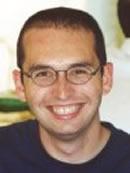 Originator of Spring Web Flow Project
Originator of Spring Web Flow Project
Erwin Vervaet is a software engineer with a keen interest in applying modern IT concepts and tools. He holds a master's degree in computer science from the Katholieke Universiteit Leuven in Belgium.
Erwin has been using Java since its inception and has extensive experience applying it in IT research, e-commerce projects, open source initiatives, industrial software systems and business support applications. He currently works as an independent consultant, running his own software and consultancy company: www.ervacon.com.
Erwin also enjoys teaching and speaking on Java and Spring related subjects. As the originator the Spring Web Flow project, he currently co-leads it's development together with Keith Donald. He also authored the first book entirely dedicated to Spring Web Flow: Working with Spring Web Flow.


 Senior software engineer at SpringSource and Project Lead for Spring Python
Senior software engineer at SpringSource and Project Lead for Spring Python
Greg has worked in the software industry since 1997, always seeking the right tool for the job. Greg joined SpringSource in 2010 as a senior software engineer. He previously was part of the senior software team working on Harris' $3.5 billion FAA telco program, architecting mission critical enterprise apps while managing a software team. While providing after hours support, he is no stranger to midnight failures and software triage.
Being a test-bitten script junky, Greg has used JUnit, TestNG, JMock, FEST, PyUnit, and pMock testing frameworks, along with other agile practices to produce top quality code.
He has worked with Java/Spring/Spring Security/@AspectJ/Jython technologies, UNIX/Linux/Solaris platforms, and python/jython/bash/csh/expect scripting. Being a wiki evangelist, he also deployed a LAMP-based wiki web site to provide finger tip knowledge to users.
In 2006, Greg created the Spring Python project. The Spring Framework provided many useful features, and he wanted those same features available when working with Python. He also wrote Spring Python 1.1 through Packt Publishing.
Greg completed a master's degree in Computer Engineering at Auburn University in 1997, and lives in Melbourne, FL with his family.


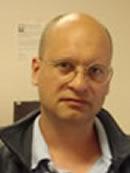 Lead of Spring Batch, SpringSource Principal Consultant
Lead of Spring Batch, SpringSource Principal Consultant
Dr David Syer is the technical lead on Spring Batch, the batch processing framework and toolkit from SpringSource. He is an experienced, delivery-focused architect and development manager. He has designed and built successful enterprise software solutions using Spring, and implemented them in major financial institutions worldwide. David is known for his clear and informative training style and has deep knowledge and experience with all aspects of real-life usage of the Spring framework. He enjoys creating business value from the application of simple principles to enterprise architecture. David joined SpringSource from a leading risk management software vendor where he worked closely with SpringSource on a number of projects. Recent publications have appeared in Balance Sheet, Operational Risk and Derivatives Technology.


 Staff Engineer at SpringSource, VMware
Staff Engineer at SpringSource, VMware
I began my career as a C/C++ programmer working on VINES, a distributed directory services product at Banyan Systems. Over the years I've worked on various Java Web applications including a set of multi-tenant e-commerce web applications, an investment accounting system, a trading and risk management system, and others.
I've been using Spring and many of the Spring projects since 2006. I've helped many to learn or to use Spring more effectively through teaching and consulting. Presently I am a comitter on the Spring MVC and the Spring Web Flow projects. My current home is New York city.


 Consulting Solutions Architect
Consulting Solutions Architect
Randy Stafford is a practicing software professional with 20 years experience as a developer, analyst, architect, manager, consultant, and author/presenter.
Currently for Oracle's middleware development A-Team, he engages globally for proof-of-concept projects, architecture reviews, and production crises with diverse customer organizations, specializing in grid, SOA, performance, HA, and JEE/ORM work.


 Co-Author of ActiveMQ In Action
Co-Author of ActiveMQ In Action
Bruce Snyder is a veteran of enterprise software development and a recognized leader in open source software. With over a decade of experience, Bruce has worked with a wide range of technologies including Java EE, Enterprise Messaging and Service Oriented Integration. In addition to his role as a senior software engineer at SpringSource, Bruce is also an Apache Member, a co-founder of Apache Geronimo and a developer for Apache ActiveMQ, Apache Camel and Apache ServiceMix. He is the co-author of Professional Apache Geronimo, Beginning Spring Framework 2 both from Wrox Press and is currently co-authoring ActiveMQ In Action for Manning Publications. Bruce also serves as a member of various JCP expert groups and is a recognized international speaker at industry conferences. Bruce lives in beautiful Boulder, Colorado with his family.


 Architect Manager, Aetna
Architect Manager, Aetna
Mark Schwartz is an Architect Manager with eight years experience with enterprise focused development as a software engineer and manager.
Mark has worked for multiple Fortune 100 companies using his expertise in application development to introduce and implement new technologies including Java, WebSphere, WebLogic, and the Spring Framework.
Mark's current responsibilities include development, release management, and production support of enterprise class reusable Java, .NET, COBOL, and security frameworks and assets.
Mark's current mission focuses on optimizing the enterprise application development process by leveraging reusable open source products and delivering software automation solutions.


 Original Spring Developer & Director of R&D, SpringSource
Original Spring Developer & Director of R&D, SpringSource
Colin is Director of R&D at SpringSource (now a division of VMware), which he co-founded in 2004. He is one of the original core committers on the Spring Framework, a published author, and public speaker. Since starting SpringSource he has served in a number of roles throughout various parts of the organization, including Engineering, Service Delivery, Support, and Sales. Colin is at his best when combining both technical as well as business and customer facing aspects.
Colin has had a long and varied career spanning 23 years in both the enterprise and shrinkwrap software space, including previous experience developing for and building out a retail software company.
Immediately prior to SpringSource, Colin spent 5 years as architect/chief architect at a leading software incubator and VC firm. Colin's role was split between one part hands on architecture, design, and coding, another part mentoring and teaching best practices at the code and process level, and a final part performing technical due diligence and consulting for the VC arm.
Throughout his career, Colin's experience, wide ranging interests and general knowledge in the technology space have led him to be a resource that others have been able to draw on for advice. In general, Colin's background has left him with a deep knowledge of all it takes to successfully release good software, at the code, process, and business level.


 Vice President, Principal Analyst Forrester Research
Vice President, Principal Analyst Forrester Research
As an analyst, John primarily contributes to Forrester's offerings for the Application & Program Management professional. He is a leading expert on the market for application platforms and infrastructure software for building and running applications. Included in his coverage are the Java/J2EE application servers from BEA, IBM, JBoss, Oracle, SAP, and Sun Microsystems and the equivalent portions of Microsoft's .NET platform. John also covers the business rules platforms market.


 Founder and CTO of Skyway Software
Founder and CTO of Skyway Software
Jared Rodriguez created the first internet marketplace software in 1996 when he was co-founder and CTO at TRADEX, a leading provider of e-marketplace software technology. After Ariba acquired TRADEX in the late 1990s, Rodriguez served as CTO at Ariba and a Principal of Armada Venture Capital Group. Rodriguez is an author of the Universal Description, Discovery and Integration (UDDI) specification and is listed as 'one to watch' among InfoWorld's 2002 list of technology innovators. Rodriguez co-founded Skyway Software in November 2001.


 Head of Grails Development for SpringSource
Head of Grails Development for SpringSource
As Head of Grails Development for SpringSource, Graeme Rocher is the project lead and co-founder of the Grails web application framework. He's a member of the JSR-241 Expert Group which standardizes the Groovy language. Graeme authored the Definitive Guide to Grails for Apress and is a frequent speaker at JavaOne, JavaPolis, NoFluffJustStuff, JAOO, the Sun TechDays and more. Graeme joined SpringSource in late 2008 upon the acquisition of G2One Inc. Before founding G2One, Graeme was the CTO of SkillsMatter, a skills transfer company specializing in open source technology and agile software development, where Graeme was in charge of the company's courseware development strategy and general technical direction.


 co-author of "Professional Java Development with the Spring Framework"
co-author of "Professional Java Development with the Spring Framework"
Thomas has been a developer on the Spring Framework project since early 2003, contributing to enhancements of the JDBC framework portion.
Thomas currently works as a consultant for SpringSource specializing in Java EE and database projects. He has been involved with developing database applications, both as a DBA and as an application developer for over 20 years, using a wide variety of languages and databases.
Thomas is co-author of "Professional Java Development with the Spring Framework" together with Rod Johnson, Juergen Hoeller, Alef Arendsen, and Colin Sampaleanu, published by Wrox in 2005.


 Distinguished Software Engineer at LinkedIn
Distinguished Software Engineer at LinkedIn
Yan Pujante is a Distinguished Software Engineer at LinkedIn. As a member of the founding team of LinkedIn, Yan has been involved in a lot of various areas of the product: architecture, ui framework, wiring framework, security, replication, scalability, and many more... Yan is currently working with the platform team on building the next iteration of the software that will scale both from a product point of view and from a developper point of view.
Yan has 12 years of professional experience with a total of 25 years of passion for computers (dating back to the era of the TI-99/4A).


 Founder & Project Lead for Spring Web Services
Founder & Project Lead for Spring Web Services
Arjen Poutsma is a senior enterprise application architect with more than fifteen years' experience in commercial software environments. During this time he has worked with both J2EE and Microsoft .NET.
In 2004, Arjen started to specialise in Web Services and Service Oriented Architectures. During this period he has conducted trainings and has researched SOAs in large organisations.
Arjen is the founder and the project lead for the Spring Web Services. This Spring project aims at facilitating development of document-driven web services. Recently, Arjen worked on the REST support in Spring 3.0. Arjen has also contributed to various other open source projects, including XFire, NEO and others.
Since early 2005, Arjen has been a consultant for SpringSource in The Netherlands. Currently, he is a Software Engineer.


 Founder Spring.NET
Founder Spring.NET
Dr. Mark Pollack has worked extensively in the financial sector as an architect and developer on various front office trading systems that involved a mixture of Microsoft and Java technologies. Always interested in best practices and improving the software development process, Mark has been a core Spring (Java) developer since 2003 and founded its Microsoft counterpart, Spring.NET, in 2004 which he continues to lead.
Prior to joining SpringSource, he was a founding partner at CodeStreet, LLC, an independent software vendor in the financial services industry. This year Mark has been recognized as a Microsoft Most Valuable Professional (MVP) for his involvement in the technical community.


 Oracle Software Enginer and Coherence Specialist
Oracle Software Enginer and Coherence Specialist
Patrick Peralta is a software engineer for Oracle, specializing in Coherence and middleware Java. Patrick's ten years of software development experience includes implementing Java/J2EE middle tier solutions, web applications, system integrations, and Swing desktop clients. Prior to joining Oracle, Patrick was a senior developer at Symantec, working on J2EE and integration systems. He enjoys mentoring others on technology and participating in user groups and the developer community. Patrick has a BS in computer science from Stetson University in Florida.


 Distinguished Engineer, SpringSource
Distinguished Engineer, SpringSource
Glyn works in the SpringSource dm Server development team in Southampton, England where he helped to define the architecture of the dm Server and developed several core components.
He is an active member of the Core Platform Expert Group of the OSGi Alliance developing a future release of the OSGi platform.
He was the spec. lead of JSR 291 which brought OSGi into the Java Community Process. He was also an active member of the JSR 277 and JSR 294 Expert Groups which aim to add module constructs to Java.
His 27 year career has been spent mostly in transactional middleware and Java virtual machine development and in applying mathematical models to software development.


 SpringSource Senior Consultant
SpringSource Senior Consultant
Jim is a Senior Consultant for SpringSource, and has spent over a decade delivering solutions at all layers of the software stack. His experience ranges from designing back-end enterprise systems for multi-national corporations, to basic infrastructure and rich desktop applications.
He enjoys working with a wide range of technologies and languages, and speaks at user groups and conferences about the easiest ways to get development tasks done, whether that be specific technologies or methodologies.


 Russ Miles is a senior consultant and project lead at SpringSource
Russ Miles is a senior consultant and project lead at SpringSource
A self-confessed polyglot programmer, Russ Miles is a senior consultant for SpringSource in the UK where he works with various companies to help them take full advantage of the Spring Framework. To ensure that he has as little spare time as possible, Russ contributes to various open source projects and has authored a number of books.
Russ is a keen contributor to open source projects and an author for O'Reilly Media. He has authored and co-authored 3 books; "AspectJ Cookbook", "Learning UML 2.0" and "Head First Software Development"
Prior to joining SpringSource, Russ gained experience of enterprise development throughout all tiers of application architecture including high performance and usability presentation tier services for the Search and Mobile Portal industries right through to maximum availability application and data services for the Defence industry.
Russ holds an MSc. Software Engineering from Oxford University.


 Principal Engineer in the Office of the CTO, VMWare
Principal Engineer in the Office of the CTO, VMWare
Richard McDougall is a Principal Engineer in the Office of the CTO at VMware, where he focuses on scalability, observability and performance of virtualization systems. One of his particular projects is characterizing the performance of Oracle Database on VMware Infrastructure.
Richard is the co-author of “Solaris Internals”, “Solaris Performance and Tools” (solarisinternals.com) and the lead author for “Resource Management” (Prentice Hall/Sun Blueprints). He has written numerous articles and papers on measurement, monitoring and capacity planning of Solaris systems, and frequently speaks at industry and customer technical conferences on the topics of system performance and resource management.
Richard and his performance team have published and blogged on several Oracle performance topics on vmware.com including http://www.vmware.com/resources/techresources/1055 and http://blogs.vmware.com/performance/ .


 Accenture Solution Architect
Accenture Solution Architect
Wayne has over 20 years of experience creating, developing, and deploying enterprise architectures systems for some of the largest organizations in finance, telecom, products and government.
Wayne is a senior technology manager within Accenture and a member of the Innovation and Architecture / Custom Solutions Architecture practice. In this capacity, he has been involved in the implementation of many enterprise applications including case management, customer service, web commerce, point of sale, call center, transportation operations and government programs. He is experienced in product development life cycle, bringing a solution from concept to production and operation.
Wayne's career over the past 8 years has had special emphasis on J2EE architectures with WebSphere/WebLogic focused on configuration, deployment, and performance. Wayne has had a history with object databases and has been a strong advocate for ORM solutions including TopLink and Hibernate. He's been a speaker at JBOSS World 2005 and in many internal Accenture architecture workshops.
Most recently, Wayne has been involved with a global architecture team involved with re-defining Java architecture based on open source and Spring's lightweight frameworks. One of the most interesting of those frameworks has been the introduction of a Spring based Java Batch framework based on years of experience with large, high performing batch solutions.


 Software Engineer, Pentaho
Software Engineer, Pentaho
Mat Lowery is a Software Engineer at Pentaho Corporation. He has been with the company for more than two years and has worked on multiple front-end and back-end development projects across many different Pentaho products.
Mat is a contributor to the Spring Framework, having provided code, defect reports, and test cases to help improve Acegi security and other modules.
In his time at Pentaho Corporation, Mat has developed and contributed to many challenging product engineering initiatives at Pentaho including:
• Implementing row-level security in a centralized metadata layer
• Automating aggregate table design in databases to improve analytical query performance
• Numerous security and security-integration projects, including single sign-on through integration with Central Authentication Service (CAS)
Prior to working at Pentaho, Mat was an Application Software Developer for four years at Wyndham Vacation Ownership where he implemented an extensible web application security infrastructure as well as data layer, business facade, and reusable UI elements for Fairfield Resorts' primary external web site using established enterprise design patterns.
Mat received a Master’s Degree in Computer Science from The University of Central Florida in 2003.


 Core Developer of Spring Portlet MVC
Core Developer of Spring Portlet MVC
John Lewis is the Chief Software Architect for Unicon Inc, the leading independent provider of open source training, consulting, and support in higher education. John is a 16 year veteran of the software engineering industry. His passions are large-scale enterprise architecture, open-source technologies, and agile software development methods. John has been working heavily in Java-based enterprise information portals since 2001 and is the lead developer of Spring Portlet MVC, which provides JSR 168 support in the Spring Framework. He is also active in several higher education open source communities, including uPortal and Sakai.


 Lead, Spring GemFire, Hadoop, Redis
Lead, Spring GemFire, Hadoop, Redis
Costin Leau is an engineer within the SpringSource. His interests include data access and aspect oriented programming. With significant development experience, Costin has worked on various Spring Framework features (cache abstraction, JPA, java config), led the Spring Dynamic Modules (Spring OSGi probject) and the Spring-inspired, OSGi 4.2 Blueprint Service RI. Currently Costin is working in the NOSQL and Big Data area, leading the Spring integration with GemFire, Hadoop and Redis.


 Author of AspectJ in Action, Principal at SpringSource
Author of AspectJ in Action, Principal at SpringSource
Ramnivas Laddad is a SpringSource Principal Enginner. He has over a decade of experience in applying his enterprise Java and aspect-oriented programming (AOP) expertise to middleware, design automation, networking, web application, user interface, and security projects.
Ramnivas Laddad is a well-known expert in enterprise Java, especially in the area of AOP and Spring. He is the author of AspectJ in Action, the best-selling book on AOP and AspectJ that has been lauded by industry experts for its presentation of practical and innovative AOP applications to solve real-world problems. Ramnivas, a Spring framework committer, is also an active presenter at leading industry events such as JavaOne, JavaPolis, No Fluff Just Stuff, SpringOne, Software Development, and has been an active member of both the AspectJ and Spring communities from their beginnings.


 Lead of Java Application Infrastructure at Morgan Stanley
Lead of Java Application Infrastructure at Morgan Stanley
Mark Kralj-Taylor leads the global Java Toolkits Application Infrastructure group at Morgan Stanley. The group provides Java infrastructure centrally, including open-source libraries, to improve the productivity of Java developers throughout the firm. Mark focuses on technical direction for the group, and how Java is used across the firm, evolving a blend of open-source and in-house libraries, to take best advantage of the ever changing Java landscape, and integrate with the firm's technology environment. Before this Mark worked in application groups, using Java to deliver solutions to the business.
Prior to joining Morgan Stanley in 2000, Mark used his Physics background to develop numerical simulations in C++.


 Software Developer & Mentor
Software Developer & Mentor
Kirk is an industry analyst at Burton Group. For 15 years, he has worked in the trenches on real software projects. He takes a keen interest in design, architecture, application development platforms, agile development, and the IT industry in general, especially as it relates to software development.
In 2002, Kirk wrote the book Java Design: Objects, UML, and Process, published by Addison-Wesley. He has also written numerous whitepapers and articles, including The Agile Developer column for The Agile Journal. Kirk is the founder of Extensible Java, a growing resource of component design pattern heuristics for Java that can easily be applied to most other platforms, including .Net. Kirk has trained thousands of software professionals, teaching courses on UML, Java J2EE technology, object-oriented development, component based development, software architecture, and software process. He enjoys hacking in a variety of languages, including Java, .Net, Ruby, and PHP.


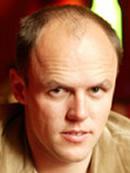 CEO of Tasktop, Creator of the Eclipse Mylyn Project
CEO of Tasktop, Creator of the Eclipse Mylyn Project
Dr. Mik Kersten is the CEO of Tasktop Technologies, creator of the Eclipse Mylyn open source project and inventor of the task-focused interface. As a research scientist at Xerox PARC, Mik implemented the first aspect-oriented programming tools for AspectJ. He created Mylyn and the task-focused interface during his PhD in Computer Science at the University of British Columbia. Mik has been an Eclipse committer since 2002, is an elected member of the Eclipse Board of Directors and serves on the Eclipse Architecture Council. Mik's thought leadership on task-focused collaboration makes him a popular speaker at software conferences, and he was voted a JavaOne Rock Star speaker in 2008 and 2009. He enjoys building tools that offload our brains and make it easier to get creative work done. Follow @mik_kersten on Twitter.


 Founder and VP of Product Delivery, Skyway Software
Founder and VP of Product Delivery, Skyway Software
Jack Kennedy leads all phases of software development at Skyway Software. Before co-founding Skyway Software in November 2001, Kennedy was a consulting architect for MarketMile, a leading e-procurement service provider. Kennedy served as Chief Architect of the Marketplace product for Ariba, following Ariba's acquisition of TRADEX. Kennedy earned a B.A. degree in Management of Information Systems from the University of South Florida.


 Creator of Spring & Best Selling Author of J2EE without EJB
Creator of Spring & Best Selling Author of J2EE without EJB
Rod Johnson is the father of Spring, which grew out of his influential book, “Expert One-on-One J2EE Design and Development,” which initiated the “lightweight” transformation of enterprise Java. Rod co-founded SpringSource, where he served as CEO until its 2009 acquisition by VMware, where he is now a Senior Vice President.
Rod is an authority on enterprise Java architecture, a thought leader on open source development and business models, and a popular speaker at conferences around the world.
Rod has over 15 years technology, management and business experience. He holds a BA with Honors in Computer Science, Mathematics and Musicology as well as a PhD from the University of Sydney.


 Chief Open Source Officer & Principal Software Engineer
Chief Open Source Officer & Principal Software Engineer
Jim Jagielski is Chief Open Source Officer, Principal Software Engineer and Lead for tc Server at SpringSource. As Chief Open Source Officer, Jim brings his decade plus of experience in working with open source communities to ensure that SpringSource is successfully contributing, leveraging and remains committed to the communities that matter most to our customers.
Jim is best known for his deep, long-term involvement in open source and with the Apache Software Foundation (ASF). Within the ASF, which he co-founded, Jim is an active, key developer in numerous projects, including Apache Tomcat, Apache APR, and Apache HTTPd, in which he is the longest active committer within that project. He also serves on the board of directors of the ASF, a position he has held since its inception, and currently serves as Chairman.
Jim's team at SpringSource is focused on the Apache-based portfolio of products, used in association with the Spring Framework as well as independently. He and his team maintain continued deep development of these codebases, provide consulting and training around them, and serve as escalated technical support. As Chief Open Source Officer, Jim provides guidance and expertise over non-Spring related open source technologies, including Apache software, to compliment current offerings. He has a special affinity for scripting languages in addition to Java and C, and has the unique capability of handling technical problems from high-level architectural to low-level development point of view, and all aspects in between.
Over his career, Jim has served as CTO for Zend Technologies and Covalent Technologies. He founded jaguNET Access Services, a web solutions company and he also was a manager and engineer at NASA's Goddard Space Flight Center. He has spoken and presented at numerous conferences and seminars, and is a sought after resource by reporters and analysts regarding Apache and open source in general. He is also a noted author, having written numerous articles, including a monthly section in several magazines. Previously, he was also editor of the Apache section on Slashdot.


 Co-founder of the Spring Framework Project
Co-founder of the Spring Framework Project
Juergen has been the most active Spring developer since the open source project began from Rod's Interface21 framework back in February 2003. Juergen and Rod together continue to provide the direction for Spring.
Juergen has earned great respect in the Spring and J2EE communities for his energy, the quality of his code, his incredible attention to detail, and his huge contribution in Spring forums and mailing lists.
Juergen is an experienced consultant, with outstanding expertise in web applications, transaction management, O/R mapping technologies, and lightweight remoting. He has specialized in J2EE since early 2000, having held technology leader positions in various projects ranging from enterprise application integration to web-based data visualization.


 Project Lead of the Dojo Toolkit and Support Lead for SitePen, Inc
Project Lead of the Dojo Toolkit and Support Lead for SitePen, Inc
Peter Higgins (aka dante) is a software engineer at SitePen, a prominent
web development and consulting company based in Silicon Valley. Peter
heads up SitePen's Dojo Support, a great option for companies needing
technical advice, code fixes and answers from the experts. As the newly
appointed Dojo Project Lead, Peter spends countless hours improving the
Dojo Toolkit, writing great demos and tutorials, and helping new Dojo
users become proficient with the toolkit, all key ingredients to
building a thriving Dojo Community.


 Senior Software Engineer at SpringSource
Senior Software Engineer at SpringSource
Jennifer Hickey is a senior software engineer for SpringSource, the company behind Spring. She holds a master's degree in software engineering from the Florida Institute of Technology. Jennifer specializes in enterprise application management, with a focus on application modeling methodologies and techniques for rapid development and deployment of management agents. Her interests include aspect oriented programming, asynchronous messaging, JMX, and OSGi.
Jennifer is also very interested in improving organizational productivity through testing. In a previous position, she won an excellence award for introducing automated unit, integration, and regression testing into the development process.
Prior to joining SpringSource, Jennifer was a principal architect of a large-scale network management system.


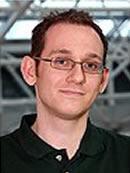 Core Spring developer and author of the best seller Pro Spring
Core Spring developer and author of the best seller Pro Spring
Rob Harrop is a respected speaker, author, entrepreneur and technologist.
As Lead Engineer of SpringSource dm Server, Rob is driving SpringSource's enterprise middleware product line and ensuring that the company continues to deliver high-performance, highly scalable
enterprise soutions. With a thorough knowledge of both Java and .NET, Rob has successfully deployed projects across both platforms. He has
extensive experience across a variety of sectors, in particular banking,retail and government. Prior to joining SpringSource, he co-founded UK-based software company Cake Solutions Limited and worked as Lead Developer for a successful dotcom start-up.
Rob is the author of five books, including Pro Spring, a widely acclaimed, comprehensive resource on the Spring Framework.
Rob is a member of the JCP and is involved in the JSR-255 Expert Group for JMX 2.0. Rob is an experienced, highly-sought after, technical speaker who can communicate complex topics in a way that any developer can understand. Over the past 3-4 years, Rob has also presented at JavaOne, QCon, AOSD, The Spring Experience, SpringONE, OSCon, and OreDev on a variety of topics to rave reviews.


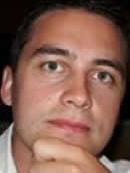 Senior Software Engineer, SpringSource.
Senior Software Engineer, SpringSource.
Filip is a Senior Software Engineer for SpringSource and a key participant in the company's Apache Tomcat initiatives. Filip brings 15 years of extensive experience in architecture, design and development of distributed application frameworks and containers and is recognized for his top-quality system development skills and continuous participation of Open Source development projects.
Filip is an Apache Software Foundation member and a committer to the Apache Tomcat project where he is a leading authority on Tomcat clustering and a key contributor to the core of the platform.
Filip has made contributions to software initiatives for Walmart.com, Sony Music, France Telecom and has held a variety of senior software engineering positions with technology companies in both the United States and Sweden.
He received his education at Chalmers University of Technology in Gothenburg, Sweden where he majored in Computer Science and Computer Engineering.


 Senior Software Engineer, SpringSource
Senior Software Engineer, SpringSource
Jeremy Grelle is an open source software engineer with SpringSource, a division of VMware, who specializes in bringing the cutting-edge techniques of web application development to the Java and Spring ecosystems. He is the creator of the Spring JavaScript, Spring Faces, and Spring BlazeDS Integration projects, and he represents SpringSource on the JSR-314 Expert Group for JSF 2.0. He is a software artisan with extensive experience in combining server-side Java with the latest web browser technologies to deliver a rich and usable experience for the end user on the web.
Jeremy is a frequent speaker at industry conferences such as JavaOne, The Spring Experience, SpringOne, JSFOne, TheServerSide Java Symposium, and Java and Flex user group events, and always enjoys getting out and showing his fellow developers how to bend web browsers to their will and the possibilities of what can be created with Spring and its wealth of complimentary web technologies.


 Director of Developer Relations, SpringSource
Director of Developer Relations, SpringSource
Adam is the Director of Developer Relations at SpringSource and has extensive experience in enterprise Java community management. Prior to joining SpringSource, Adam ran BEA's dev2dev community and was a product evangelist, technology educator and public speaker for BEA's WebLogic products.


 Spring Integration Lead
Spring Integration Lead
Mark Fisher is an engineer within the SpringSource division of VMware and lead of the Spring Integration project. He is also a committer on the core Spring Framework and the Spring BlazeDS Integration project. Mark has provided consulting services for clients across numerous industries, and he has trained hundreds of developers how to use the Spring Framework and related projects effectively. Mark speaks regularly at conferences and user groups in America and Europe.


 VP, Enablement and Support, Skyway Software
VP, Enablement and Support, Skyway Software
Mr. Evans leads Skyway Software’s global teams of enablement and support professionals and is responsible for ensuring customers and partners gain maximum value from using Skyway Visual Perspectives. Prior to joining Skyway Software, he spent 10 years at Accenture as one of their top technical architects and worked with a large variety of technical and application architectures to lead implementation teams during the full software delivery lifecycle at numerous client engagements. Evans earned a BS in Computer Science from the University of South Florida.


 VP, Applications and Platforms, MTV Networks Global Digital Media
VP, Applications and Platforms, MTV Networks Global Digital Media
Justin Edelson is the Vice President of Applications and Platforms for MTV Networks Global Digital Media. He is the co-author of two books on software development: Java & XML, 3rd Edition (2006) and JRuby Cookbook (2008). Over the last decade, he has contributed to high-profile web and mobile applications for brands such as MTV, VH1, Comedy Central, Showtime, The Movie Channel, Spike TV, Nickelodeon, and MSN.


 Lead, SpringSource Tool Suite and Spring IDE
Lead, SpringSource Tool Suite and Spring IDE
Christian is a Principal Software Engineer for SpringSource and is the leader of the Tools Team responsible for SpringSource development tools including SpringSource Tool Suite. Since 2004 Christian has led the well known Spring IDE open source project that provides development tools for the Spring Portfolio based on Eclipse.
Christian has been developing Java enterprise applications since 1997. During this time, Christian designed complex software architectures with a focus on multi-tiered, web-based, client-server applications using enterprise Java technologies and the Spring Framework. Prior to joining SpringSource, Christian worked as consultant and project manager for one of the leading global technology consulting firms in the financial sector in central Europe.
Christian has presented on a variety of enterprise Java topics at conferences such as JAX, W-JAX, SpringOne and The Spring Experience.


 SpringSource Principal & Founding Partner
SpringSource Principal & Founding Partner
Keith Donald is a principal and founding partner at SpringSource, the company behind Spring and a division of VMware. At SpringSource, Keith is a full-time member of the Spring development team focusing on web application development productivity. He is also the architect behind SpringSource's state-of-the-art training curriculum, which has provided practical Spring training to over 10,000 students worldwide.
Over his career, Keith, an experienced enterprise software developer and mentor, has built business applications for customers spanning a diverse set of industries including banking, network management, information assurance, education, retail, and healthcare. He is particularly skilled at translating business requirements into technical solutions.


 CTO of SpringSource
CTO of SpringSource
Adrian Colyer is the CTO of SpringSource and has more than a dozen years of experience leading teams in Java and enterprise middleware.
Adrian Colyer is the leader of the AspectJ open source project and a well-known industry expert on the topic of aspect-oriented programming (AOP). He is a co-author of the book "Eclipse AspectJ : Aspect-Oriented Programming in Eclipse with AspectJ and AJDT," and has also published numerous book chapters, articles and published papers. His short essay, "AOP without the buzzwords" has been described as "the best explanation of AOP, ever."
In 2004, Adrian was recognized as one of the top 100 young innovators in the world by MIT Technology Review for his contributions to the development and adoption of aspect-oriented programming in industry.
Adrian founded the AspectJ Development Tools project (AJDT) on Eclipse.org in 2003, a project that continues to lead the world in providing IDE support for AOP. As leader of the AspectJ project, Adrian has overseen several releases of the compiler and designed and implemented many of the AspectJ 5 language extensions to support Java 5 features.
Prior to joining SpringSource, Adrian gained over a decade of experience in building enterprise middleware at IBM. Whilst there he oversaw the introduction of aspect-oriented programming to many IBM development teams.
Adrian holds a BSc, Computer Science from University of Southampton.


 Spring Framework Committer
Spring Framework Committer
Chris is an engineer for SpringSource and a member of the core Spring Framework development team. Chris joined SpringSource (then Interface21) in 2007, focused on training, consulting and leading the development effort to bring code-based configuration to the core Spring container. In 2010, Chris transitioned to full-time engineering, and continues to focus on Spring Framework development. You can find him online as @cbeams at both GitHub and Twitter.


 Software Engineer
Software Engineer
Scott is a member of the web products team at SpringSource, where he focuses on creating and sustaining rich web applications and frameworks. Scott is the creator of the SpringSource Enterprise Bundle Repository, a production web application built on Spring 2.5, Spring MVC, and Spring JavaScript. He is also an expert in UI design, style, accessibility, and particularly skilled in interacting with customers to map business requirements to innovative software solutions. Over the course of his career, Scott has lead the successful development of mission-critical web applications in the areas of academia and technology infrastructure.


 Creator of Spring Security, Spring Roo & SpringSource Principal S/W Engineer
Creator of Spring Security, Spring Roo & SpringSource Principal S/W Engineer
Dr Ben Alex is a Principal Software Engineer with SpringSource, and has been working professionally in software since 1995. Ben founded the Spring Security project in 2003 and led its development into a popular, open-source security framework that is used in numerous government, banking and military installations. More recently Ben founded and serves as lead of the Spring Roo and Spring Shell projects, both of which deliver significant productivity and usability benefits to those using Spring technologies.
Ben's career history also includes other roles in software development and business. From 2005 until 2008, he led the establishment and exponential growth of SpringSource's operations in Asia-Pacific. Prior to SpringSource, Ben founded and grew a successful Australian software company, Acegi Technology Pty Limited. He has been a director and advisor to businesses in diverse industries including business services, intellectual property licensing and ecommerce.
In recent years, Ben has presented at technology conferences including JavaOne, The Server Side Java Symposium, JAOO, Oredev, SpringOne and The Spring Experience. He is a regular guest presenter at user groups across the world, with recent appearances in Sydney, Melbourne, Brisbane, Canberra, Perth, Singapore, Wellington, Auckland, Christchurch and Stockholm. He also authored the security chapter of the Wiley book, "Professional J2EE Development with Spring Framework," and maintains a blog at http://blog.springsource.com/main/author/bena/.


 Author of Spring in Action
Author of Spring in Action
Craig Walls has been professionally developing software for over 17 years (and longer than that for the pure geekiness of it). He is a senior engineer with SpringSource as the Spring Social project lead and is the author of Spring in Action and XDoclet in Action (both published by Manning) and Modular Java (published by Pragmatic Bookshelf). He's a zealous promoter of the Spring Framework, speaking frequently at local user groups and conferences and writing about Spring and OSGi on his blog. When he's not slinging code, Craig spends as much time as he can with his wife, two daughters, 4 birds and 3 dogs.


 SOA and Integration Architect, Author of Java Message Service
SOA and Integration Architect, Author of Java Message Service
Mark Richards is a Director and Senior Architect at Collaborative Consulting, LLC, a Boston-based Business and Architecture Consulting Firm, where he is involved in the architecture, design, and implementation of SOA, EDA, messaging, and other architectures, primarily in the Java platform. Prior to joining Collaborative Mark was an Executive IT Architect with IBM, where he worked as an SOA and enterprise architect in the financial services area. He has been involved in the software industry since 1984 and has many battle scars to show for it. Mark served as the President of the Boston Java User Group in 1997 and 1998, and the President of the New England Java Users Group from 1999 thru 2003. Mark is the author of the book Java Message Service (2nd edition) from O'Reilly. He is also the author of Java Transaction Design Strategies, contributing author of the book 97 Things Every Software Architect Should Know from O'Reilly, contributing author of NFJS Anthology Volume 1, and contributing author of NFJS Anthology Volume 2. Mark has many architect and developer certifications, including those from IBM, Sun, The Open Group, and Oracle. He is a regular conference speaker at the No Fluff Just Stuff Symposium Series and speaks at other conferences and user groups around the world. When he is not working Mark can usually be found hiking with his wife and two daughters in the White Mountains or along the Appalachian Trail.


 Enterprise Architect
Enterprise Architect
Pratik Patel wrote the first book on 'enterprise Java' in 1996, "Java Database Programming with JDBC." He has also spoken at various conferences and participates in several local tech groups and startup groups. He's the CTO of Atlanta based TripLingo (http://www.triplingo.com/)
Pratik's specialty is in large-scale applications for mission-critical and mobile applications use. He has designed and built applications in the retail, health care, financial services, and telecoms sectors. Pratik holds a master's in Biomedical Engineering from UNC, has worked in places such as New York, London, and Hong Kong, and currently lives in Atlanta, GA.


 Development Associate with SitePen
Development Associate with SitePen
Kris Zyp is a research and development associate with SitePen, a forward-thinking company that is committed to building and enhancing the open web. He represents the Dojo foundation on the EcmaScript 4 committee. Kris is the lead developer of the Persevere project and the JSON Schema format. He is actively researching and developing technologies in Ajax REST client/server architecture, JSON-RPC, JSONPath, JSON Referencing, and JavaScript persistence. He is also a contributor to Comet Daily and is working on RESTful HTTP Comet approaches.


 CTO and Co-Founder, Terracotta, Inc.
CTO and Co-Founder, Terracotta, Inc.
Ari Zilka founded Terracotta in 2003 and is the company’s Chief Technology Officer. Combining business and technology leadership, Ari was an Entrepreneur-in-Residence at Accel Partners and worked at PriceWaterhouseCoopers with some of the world’s leading brands. He was Chief Architect at Walmart.com where he built and led a team of core engineers. And in the mid 1990s, Ari invented a new object relational database that still exceeds the capabilities and performance of database technology today


 SpringSource Software Engineer
SpringSource Software Engineer
David works at SpringSource as a Senior Engineer. He is working on a Flex application for a cloud product and is also on the Spring Web Team.
David has been doing software development for over 15 years. He's been using Java since 1998 and involved in using Open Source almost as long. He's an Apache committer on Struts and Commons Validator, as well as the creator of Commons Validator (although currently no longer active on either). David has focused on Web and Enterprise development for most of his career, and started working with the Spring Framework in 2006.
David runs the website Spring by Example, which is a site for sharing Spring examples. David expects this site will become a general resource for Spring Examples and ultimately save developers time.


 Technical Evangelist, Appcelerator, Inc.
Technical Evangelist, Appcelerator, Inc.
Kevin Whinnery is a core contributor and evangelist for Appcelerator, Inc., developers of the Appcelerator RIA framework. Prior to joining Appcelerator, Kevin has done server-side Java programming and UI development for ERP vendor Lawson Software and technical consultancy Perficient, Inc. Kevin is also the author of the upcoming book "Appcelerator In Action" from Manning Publications (http://www.manning.com/whinnery).


 Accenture Architect and Spring Batch Developer
Accenture Architect and Spring Batch Developer
Lucas Ward is a Java Architect focused on batch architectures within the Innovation and Architecture practice within Accenture. He has been working over the past two years on Accenture's methodology and architecture best practices, in particular regarding the use of open source. Lucas is co-leading the development of Spring Batch, utilizing experiences from multiple batch architecture implementations throughout Accenture.


 Founder and Managing Director, Hello2morrow
Founder and Managing Director, Hello2morrow
Alexander von Zitzewitz is founder, managing director of the company and CEO of the US subsidiary. He has more than 20 years of project and management experience. In 1993 he founded ootec - a company focused on project services around object oriented software technology. This company was sold to the French Valtech group in March 2000 and served customers like Siemens, BMW, Thyssen-Krupp-Stahl and other well known names in German industry. From 2003 to early 2005 he was working as Director of Central Europe for the French company Xcalia S.A. Since the summer of 2008 he is living in Massachusetts. His areas of expertise are object oriented system design and large scale system architecture. Alexander has a degree in Computer Science from the Technical University of Munich.


 Originator of Spring Web Flow Project
Originator of Spring Web Flow Project
Erwin Vervaet is a software engineer with a keen interest in applying modern IT concepts and tools. He holds a master's degree in computer science from the Katholieke Universiteit Leuven in Belgium.
Erwin has been using Java since its inception and has extensive experience applying it in IT research, e-commerce projects, open source initiatives, industrial software systems and business support applications. He currently works as an independent consultant, running his own software and consultancy company: www.ervacon.com.
Erwin also enjoys teaching and speaking on Java and Spring related subjects. As the originator the Spring Web Flow project, he currently co-leads it's development together with Keith Donald. He also authored the first book entirely dedicated to Spring Web Flow: Working with Spring Web Flow.


 Senior software engineer at SpringSource and Project Lead for Spring Python
Senior software engineer at SpringSource and Project Lead for Spring Python
Greg has worked in the software industry since 1997, always seeking the right tool for the job. Greg joined SpringSource in 2010 as a senior software engineer. He previously was part of the senior software team working on Harris' $3.5 billion FAA telco program, architecting mission critical enterprise apps while managing a software team. While providing after hours support, he is no stranger to midnight failures and software triage.
Being a test-bitten script junky, Greg has used JUnit, TestNG, JMock, FEST, PyUnit, and pMock testing frameworks, along with other agile practices to produce top quality code.
He has worked with Java/Spring/Spring Security/@AspectJ/Jython technologies, UNIX/Linux/Solaris platforms, and python/jython/bash/csh/expect scripting. Being a wiki evangelist, he also deployed a LAMP-based wiki web site to provide finger tip knowledge to users.
In 2006, Greg created the Spring Python project. The Spring Framework provided many useful features, and he wanted those same features available when working with Python. He also wrote Spring Python 1.1 through Packt Publishing.
Greg completed a master's degree in Computer Engineering at Auburn University in 1997, and lives in Melbourne, FL with his family.


 Lead of Spring Batch, SpringSource Principal Consultant
Lead of Spring Batch, SpringSource Principal Consultant
Dr David Syer is the technical lead on Spring Batch, the batch processing framework and toolkit from SpringSource. He is an experienced, delivery-focused architect and development manager. He has designed and built successful enterprise software solutions using Spring, and implemented them in major financial institutions worldwide. David is known for his clear and informative training style and has deep knowledge and experience with all aspects of real-life usage of the Spring framework. He enjoys creating business value from the application of simple principles to enterprise architecture. David joined SpringSource from a leading risk management software vendor where he worked closely with SpringSource on a number of projects. Recent publications have appeared in Balance Sheet, Operational Risk and Derivatives Technology.


 Staff Engineer at SpringSource, VMware
Staff Engineer at SpringSource, VMware
I began my career as a C/C++ programmer working on VINES, a distributed directory services product at Banyan Systems. Over the years I've worked on various Java Web applications including a set of multi-tenant e-commerce web applications, an investment accounting system, a trading and risk management system, and others.
I've been using Spring and many of the Spring projects since 2006. I've helped many to learn or to use Spring more effectively through teaching and consulting. Presently I am a comitter on the Spring MVC and the Spring Web Flow projects. My current home is New York city.


 Consulting Solutions Architect
Consulting Solutions Architect
Randy Stafford is a practicing software professional with 20 years experience as a developer, analyst, architect, manager, consultant, and author/presenter.
Currently for Oracle's middleware development A-Team, he engages globally for proof-of-concept projects, architecture reviews, and production crises with diverse customer organizations, specializing in grid, SOA, performance, HA, and JEE/ORM work.


 Co-Author of ActiveMQ In Action
Co-Author of ActiveMQ In Action
Bruce Snyder is a veteran of enterprise software development and a recognized leader in open source software. With over a decade of experience, Bruce has worked with a wide range of technologies including Java EE, Enterprise Messaging and Service Oriented Integration. In addition to his role as a senior software engineer at SpringSource, Bruce is also an Apache Member, a co-founder of Apache Geronimo and a developer for Apache ActiveMQ, Apache Camel and Apache ServiceMix. He is the co-author of Professional Apache Geronimo, Beginning Spring Framework 2 both from Wrox Press and is currently co-authoring ActiveMQ In Action for Manning Publications. Bruce also serves as a member of various JCP expert groups and is a recognized international speaker at industry conferences. Bruce lives in beautiful Boulder, Colorado with his family.


 Architect Manager, Aetna
Architect Manager, Aetna
Mark Schwartz is an Architect Manager with eight years experience with enterprise focused development as a software engineer and manager.
Mark has worked for multiple Fortune 100 companies using his expertise in application development to introduce and implement new technologies including Java, WebSphere, WebLogic, and the Spring Framework.
Mark's current responsibilities include development, release management, and production support of enterprise class reusable Java, .NET, COBOL, and security frameworks and assets.
Mark's current mission focuses on optimizing the enterprise application development process by leveraging reusable open source products and delivering software automation solutions.


 Original Spring Developer & Director of R&D, SpringSource
Original Spring Developer & Director of R&D, SpringSource
Colin is Director of R&D at SpringSource (now a division of VMware), which he co-founded in 2004. He is one of the original core committers on the Spring Framework, a published author, and public speaker. Since starting SpringSource he has served in a number of roles throughout various parts of the organization, including Engineering, Service Delivery, Support, and Sales. Colin is at his best when combining both technical as well as business and customer facing aspects.
Colin has had a long and varied career spanning 23 years in both the enterprise and shrinkwrap software space, including previous experience developing for and building out a retail software company.
Immediately prior to SpringSource, Colin spent 5 years as architect/chief architect at a leading software incubator and VC firm. Colin's role was split between one part hands on architecture, design, and coding, another part mentoring and teaching best practices at the code and process level, and a final part performing technical due diligence and consulting for the VC arm.
Throughout his career, Colin's experience, wide ranging interests and general knowledge in the technology space have led him to be a resource that others have been able to draw on for advice. In general, Colin's background has left him with a deep knowledge of all it takes to successfully release good software, at the code, process, and business level.


 Vice President, Principal Analyst Forrester Research
Vice President, Principal Analyst Forrester Research
As an analyst, John primarily contributes to Forrester's offerings for the Application & Program Management professional. He is a leading expert on the market for application platforms and infrastructure software for building and running applications. Included in his coverage are the Java/J2EE application servers from BEA, IBM, JBoss, Oracle, SAP, and Sun Microsystems and the equivalent portions of Microsoft's .NET platform. John also covers the business rules platforms market.


 Founder and CTO of Skyway Software
Founder and CTO of Skyway Software
Jared Rodriguez created the first internet marketplace software in 1996 when he was co-founder and CTO at TRADEX, a leading provider of e-marketplace software technology. After Ariba acquired TRADEX in the late 1990s, Rodriguez served as CTO at Ariba and a Principal of Armada Venture Capital Group. Rodriguez is an author of the Universal Description, Discovery and Integration (UDDI) specification and is listed as 'one to watch' among InfoWorld's 2002 list of technology innovators. Rodriguez co-founded Skyway Software in November 2001.


 Head of Grails Development for SpringSource
Head of Grails Development for SpringSource
As Head of Grails Development for SpringSource, Graeme Rocher is the project lead and co-founder of the Grails web application framework. He's a member of the JSR-241 Expert Group which standardizes the Groovy language. Graeme authored the Definitive Guide to Grails for Apress and is a frequent speaker at JavaOne, JavaPolis, NoFluffJustStuff, JAOO, the Sun TechDays and more. Graeme joined SpringSource in late 2008 upon the acquisition of G2One Inc. Before founding G2One, Graeme was the CTO of SkillsMatter, a skills transfer company specializing in open source technology and agile software development, where Graeme was in charge of the company's courseware development strategy and general technical direction.


 co-author of "Professional Java Development with the Spring Framework"
co-author of "Professional Java Development with the Spring Framework"
Thomas has been a developer on the Spring Framework project since early 2003, contributing to enhancements of the JDBC framework portion.
Thomas currently works as a consultant for SpringSource specializing in Java EE and database projects. He has been involved with developing database applications, both as a DBA and as an application developer for over 20 years, using a wide variety of languages and databases.
Thomas is co-author of "Professional Java Development with the Spring Framework" together with Rod Johnson, Juergen Hoeller, Alef Arendsen, and Colin Sampaleanu, published by Wrox in 2005.


 Distinguished Software Engineer at LinkedIn
Distinguished Software Engineer at LinkedIn
Yan Pujante is a Distinguished Software Engineer at LinkedIn. As a member of the founding team of LinkedIn, Yan has been involved in a lot of various areas of the product: architecture, ui framework, wiring framework, security, replication, scalability, and many more... Yan is currently working with the platform team on building the next iteration of the software that will scale both from a product point of view and from a developper point of view.
Yan has 12 years of professional experience with a total of 25 years of passion for computers (dating back to the era of the TI-99/4A).


 Founder & Project Lead for Spring Web Services
Founder & Project Lead for Spring Web Services
Arjen Poutsma is a senior enterprise application architect with more than fifteen years' experience in commercial software environments. During this time he has worked with both J2EE and Microsoft .NET.
In 2004, Arjen started to specialise in Web Services and Service Oriented Architectures. During this period he has conducted trainings and has researched SOAs in large organisations.
Arjen is the founder and the project lead for the Spring Web Services. This Spring project aims at facilitating development of document-driven web services. Recently, Arjen worked on the REST support in Spring 3.0. Arjen has also contributed to various other open source projects, including XFire, NEO and others.
Since early 2005, Arjen has been a consultant for SpringSource in The Netherlands. Currently, he is a Software Engineer.


 Founder Spring.NET
Founder Spring.NET
Dr. Mark Pollack has worked extensively in the financial sector as an architect and developer on various front office trading systems that involved a mixture of Microsoft and Java technologies. Always interested in best practices and improving the software development process, Mark has been a core Spring (Java) developer since 2003 and founded its Microsoft counterpart, Spring.NET, in 2004 which he continues to lead.
Prior to joining SpringSource, he was a founding partner at CodeStreet, LLC, an independent software vendor in the financial services industry. This year Mark has been recognized as a Microsoft Most Valuable Professional (MVP) for his involvement in the technical community.


 Oracle Software Enginer and Coherence Specialist
Oracle Software Enginer and Coherence Specialist
Patrick Peralta is a software engineer for Oracle, specializing in Coherence and middleware Java. Patrick's ten years of software development experience includes implementing Java/J2EE middle tier solutions, web applications, system integrations, and Swing desktop clients. Prior to joining Oracle, Patrick was a senior developer at Symantec, working on J2EE and integration systems. He enjoys mentoring others on technology and participating in user groups and the developer community. Patrick has a BS in computer science from Stetson University in Florida.


 Distinguished Engineer, SpringSource
Distinguished Engineer, SpringSource
Glyn works in the SpringSource dm Server development team in Southampton, England where he helped to define the architecture of the dm Server and developed several core components.
He is an active member of the Core Platform Expert Group of the OSGi Alliance developing a future release of the OSGi platform.
He was the spec. lead of JSR 291 which brought OSGi into the Java Community Process. He was also an active member of the JSR 277 and JSR 294 Expert Groups which aim to add module constructs to Java.
His 27 year career has been spent mostly in transactional middleware and Java virtual machine development and in applying mathematical models to software development.


 SpringSource Senior Consultant
SpringSource Senior Consultant
Jim is a Senior Consultant for SpringSource, and has spent over a decade delivering solutions at all layers of the software stack. His experience ranges from designing back-end enterprise systems for multi-national corporations, to basic infrastructure and rich desktop applications.
He enjoys working with a wide range of technologies and languages, and speaks at user groups and conferences about the easiest ways to get development tasks done, whether that be specific technologies or methodologies.


 Russ Miles is a senior consultant and project lead at SpringSource
Russ Miles is a senior consultant and project lead at SpringSource
A self-confessed polyglot programmer, Russ Miles is a senior consultant for SpringSource in the UK where he works with various companies to help them take full advantage of the Spring Framework. To ensure that he has as little spare time as possible, Russ contributes to various open source projects and has authored a number of books.
Russ is a keen contributor to open source projects and an author for O'Reilly Media. He has authored and co-authored 3 books; "AspectJ Cookbook", "Learning UML 2.0" and "Head First Software Development"
Prior to joining SpringSource, Russ gained experience of enterprise development throughout all tiers of application architecture including high performance and usability presentation tier services for the Search and Mobile Portal industries right through to maximum availability application and data services for the Defence industry.
Russ holds an MSc. Software Engineering from Oxford University.


 Principal Engineer in the Office of the CTO, VMWare
Principal Engineer in the Office of the CTO, VMWare
Richard McDougall is a Principal Engineer in the Office of the CTO at VMware, where he focuses on scalability, observability and performance of virtualization systems. One of his particular projects is characterizing the performance of Oracle Database on VMware Infrastructure.
Richard is the co-author of “Solaris Internals”, “Solaris Performance and Tools” (solarisinternals.com) and the lead author for “Resource Management” (Prentice Hall/Sun Blueprints). He has written numerous articles and papers on measurement, monitoring and capacity planning of Solaris systems, and frequently speaks at industry and customer technical conferences on the topics of system performance and resource management.
Richard and his performance team have published and blogged on several Oracle performance topics on vmware.com including http://www.vmware.com/resources/techresources/1055 and http://blogs.vmware.com/performance/ .


 Accenture Solution Architect
Accenture Solution Architect
Wayne has over 20 years of experience creating, developing, and deploying enterprise architectures systems for some of the largest organizations in finance, telecom, products and government.
Wayne is a senior technology manager within Accenture and a member of the Innovation and Architecture / Custom Solutions Architecture practice. In this capacity, he has been involved in the implementation of many enterprise applications including case management, customer service, web commerce, point of sale, call center, transportation operations and government programs. He is experienced in product development life cycle, bringing a solution from concept to production and operation.
Wayne's career over the past 8 years has had special emphasis on J2EE architectures with WebSphere/WebLogic focused on configuration, deployment, and performance. Wayne has had a history with object databases and has been a strong advocate for ORM solutions including TopLink and Hibernate. He's been a speaker at JBOSS World 2005 and in many internal Accenture architecture workshops.
Most recently, Wayne has been involved with a global architecture team involved with re-defining Java architecture based on open source and Spring's lightweight frameworks. One of the most interesting of those frameworks has been the introduction of a Spring based Java Batch framework based on years of experience with large, high performing batch solutions.


 Software Engineer, Pentaho
Software Engineer, Pentaho
Mat Lowery is a Software Engineer at Pentaho Corporation. He has been with the company for more than two years and has worked on multiple front-end and back-end development projects across many different Pentaho products.
Mat is a contributor to the Spring Framework, having provided code, defect reports, and test cases to help improve Acegi security and other modules.
In his time at Pentaho Corporation, Mat has developed and contributed to many challenging product engineering initiatives at Pentaho including:
• Implementing row-level security in a centralized metadata layer
• Automating aggregate table design in databases to improve analytical query performance
• Numerous security and security-integration projects, including single sign-on through integration with Central Authentication Service (CAS)
Prior to working at Pentaho, Mat was an Application Software Developer for four years at Wyndham Vacation Ownership where he implemented an extensible web application security infrastructure as well as data layer, business facade, and reusable UI elements for Fairfield Resorts' primary external web site using established enterprise design patterns.
Mat received a Master’s Degree in Computer Science from The University of Central Florida in 2003.


 Core Developer of Spring Portlet MVC
Core Developer of Spring Portlet MVC
John Lewis is the Chief Software Architect for Unicon Inc, the leading independent provider of open source training, consulting, and support in higher education. John is a 16 year veteran of the software engineering industry. His passions are large-scale enterprise architecture, open-source technologies, and agile software development methods. John has been working heavily in Java-based enterprise information portals since 2001 and is the lead developer of Spring Portlet MVC, which provides JSR 168 support in the Spring Framework. He is also active in several higher education open source communities, including uPortal and Sakai.


 Lead, Spring GemFire, Hadoop, Redis
Lead, Spring GemFire, Hadoop, Redis
Costin Leau is an engineer within the SpringSource. His interests include data access and aspect oriented programming. With significant development experience, Costin has worked on various Spring Framework features (cache abstraction, JPA, java config), led the Spring Dynamic Modules (Spring OSGi probject) and the Spring-inspired, OSGi 4.2 Blueprint Service RI. Currently Costin is working in the NOSQL and Big Data area, leading the Spring integration with GemFire, Hadoop and Redis.


 Author of AspectJ in Action, Principal at SpringSource
Author of AspectJ in Action, Principal at SpringSource
Ramnivas Laddad is a SpringSource Principal Enginner. He has over a decade of experience in applying his enterprise Java and aspect-oriented programming (AOP) expertise to middleware, design automation, networking, web application, user interface, and security projects.
Ramnivas Laddad is a well-known expert in enterprise Java, especially in the area of AOP and Spring. He is the author of AspectJ in Action, the best-selling book on AOP and AspectJ that has been lauded by industry experts for its presentation of practical and innovative AOP applications to solve real-world problems. Ramnivas, a Spring framework committer, is also an active presenter at leading industry events such as JavaOne, JavaPolis, No Fluff Just Stuff, SpringOne, Software Development, and has been an active member of both the AspectJ and Spring communities from their beginnings.


 Lead of Java Application Infrastructure at Morgan Stanley
Lead of Java Application Infrastructure at Morgan Stanley
Mark Kralj-Taylor leads the global Java Toolkits Application Infrastructure group at Morgan Stanley. The group provides Java infrastructure centrally, including open-source libraries, to improve the productivity of Java developers throughout the firm. Mark focuses on technical direction for the group, and how Java is used across the firm, evolving a blend of open-source and in-house libraries, to take best advantage of the ever changing Java landscape, and integrate with the firm's technology environment. Before this Mark worked in application groups, using Java to deliver solutions to the business.
Prior to joining Morgan Stanley in 2000, Mark used his Physics background to develop numerical simulations in C++.


 Software Developer & Mentor
Software Developer & Mentor
Kirk is an industry analyst at Burton Group. For 15 years, he has worked in the trenches on real software projects. He takes a keen interest in design, architecture, application development platforms, agile development, and the IT industry in general, especially as it relates to software development.
In 2002, Kirk wrote the book Java Design: Objects, UML, and Process, published by Addison-Wesley. He has also written numerous whitepapers and articles, including The Agile Developer column for The Agile Journal. Kirk is the founder of Extensible Java, a growing resource of component design pattern heuristics for Java that can easily be applied to most other platforms, including .Net. Kirk has trained thousands of software professionals, teaching courses on UML, Java J2EE technology, object-oriented development, component based development, software architecture, and software process. He enjoys hacking in a variety of languages, including Java, .Net, Ruby, and PHP.


 CEO of Tasktop, Creator of the Eclipse Mylyn Project
CEO of Tasktop, Creator of the Eclipse Mylyn Project
Dr. Mik Kersten is the CEO of Tasktop Technologies, creator of the Eclipse Mylyn open source project and inventor of the task-focused interface. As a research scientist at Xerox PARC, Mik implemented the first aspect-oriented programming tools for AspectJ. He created Mylyn and the task-focused interface during his PhD in Computer Science at the University of British Columbia. Mik has been an Eclipse committer since 2002, is an elected member of the Eclipse Board of Directors and serves on the Eclipse Architecture Council. Mik's thought leadership on task-focused collaboration makes him a popular speaker at software conferences, and he was voted a JavaOne Rock Star speaker in 2008 and 2009. He enjoys building tools that offload our brains and make it easier to get creative work done. Follow @mik_kersten on Twitter.


 Founder and VP of Product Delivery, Skyway Software
Founder and VP of Product Delivery, Skyway Software
Jack Kennedy leads all phases of software development at Skyway Software. Before co-founding Skyway Software in November 2001, Kennedy was a consulting architect for MarketMile, a leading e-procurement service provider. Kennedy served as Chief Architect of the Marketplace product for Ariba, following Ariba's acquisition of TRADEX. Kennedy earned a B.A. degree in Management of Information Systems from the University of South Florida.


 Creator of Spring & Best Selling Author of J2EE without EJB
Creator of Spring & Best Selling Author of J2EE without EJB
Rod Johnson is the father of Spring, which grew out of his influential book, “Expert One-on-One J2EE Design and Development,” which initiated the “lightweight” transformation of enterprise Java. Rod co-founded SpringSource, where he served as CEO until its 2009 acquisition by VMware, where he is now a Senior Vice President.
Rod is an authority on enterprise Java architecture, a thought leader on open source development and business models, and a popular speaker at conferences around the world.
Rod has over 15 years technology, management and business experience. He holds a BA with Honors in Computer Science, Mathematics and Musicology as well as a PhD from the University of Sydney.


 Chief Open Source Officer & Principal Software Engineer
Chief Open Source Officer & Principal Software Engineer
Jim Jagielski is Chief Open Source Officer, Principal Software Engineer and Lead for tc Server at SpringSource. As Chief Open Source Officer, Jim brings his decade plus of experience in working with open source communities to ensure that SpringSource is successfully contributing, leveraging and remains committed to the communities that matter most to our customers.
Jim is best known for his deep, long-term involvement in open source and with the Apache Software Foundation (ASF). Within the ASF, which he co-founded, Jim is an active, key developer in numerous projects, including Apache Tomcat, Apache APR, and Apache HTTPd, in which he is the longest active committer within that project. He also serves on the board of directors of the ASF, a position he has held since its inception, and currently serves as Chairman.
Jim's team at SpringSource is focused on the Apache-based portfolio of products, used in association with the Spring Framework as well as independently. He and his team maintain continued deep development of these codebases, provide consulting and training around them, and serve as escalated technical support. As Chief Open Source Officer, Jim provides guidance and expertise over non-Spring related open source technologies, including Apache software, to compliment current offerings. He has a special affinity for scripting languages in addition to Java and C, and has the unique capability of handling technical problems from high-level architectural to low-level development point of view, and all aspects in between.
Over his career, Jim has served as CTO for Zend Technologies and Covalent Technologies. He founded jaguNET Access Services, a web solutions company and he also was a manager and engineer at NASA's Goddard Space Flight Center. He has spoken and presented at numerous conferences and seminars, and is a sought after resource by reporters and analysts regarding Apache and open source in general. He is also a noted author, having written numerous articles, including a monthly section in several magazines. Previously, he was also editor of the Apache section on Slashdot.


 Co-founder of the Spring Framework Project
Co-founder of the Spring Framework Project
Juergen has been the most active Spring developer since the open source project began from Rod's Interface21 framework back in February 2003. Juergen and Rod together continue to provide the direction for Spring.
Juergen has earned great respect in the Spring and J2EE communities for his energy, the quality of his code, his incredible attention to detail, and his huge contribution in Spring forums and mailing lists.
Juergen is an experienced consultant, with outstanding expertise in web applications, transaction management, O/R mapping technologies, and lightweight remoting. He has specialized in J2EE since early 2000, having held technology leader positions in various projects ranging from enterprise application integration to web-based data visualization.


 Project Lead of the Dojo Toolkit and Support Lead for SitePen, Inc
Project Lead of the Dojo Toolkit and Support Lead for SitePen, Inc
Peter Higgins (aka dante) is a software engineer at SitePen, a prominent
web development and consulting company based in Silicon Valley. Peter
heads up SitePen's Dojo Support, a great option for companies needing
technical advice, code fixes and answers from the experts. As the newly
appointed Dojo Project Lead, Peter spends countless hours improving the
Dojo Toolkit, writing great demos and tutorials, and helping new Dojo
users become proficient with the toolkit, all key ingredients to
building a thriving Dojo Community.


 Senior Software Engineer at SpringSource
Senior Software Engineer at SpringSource
Jennifer Hickey is a senior software engineer for SpringSource, the company behind Spring. She holds a master's degree in software engineering from the Florida Institute of Technology. Jennifer specializes in enterprise application management, with a focus on application modeling methodologies and techniques for rapid development and deployment of management agents. Her interests include aspect oriented programming, asynchronous messaging, JMX, and OSGi.
Jennifer is also very interested in improving organizational productivity through testing. In a previous position, she won an excellence award for introducing automated unit, integration, and regression testing into the development process.
Prior to joining SpringSource, Jennifer was a principal architect of a large-scale network management system.


 Core Spring developer and author of the best seller Pro Spring
Core Spring developer and author of the best seller Pro Spring
Rob Harrop is a respected speaker, author, entrepreneur and technologist.
As Lead Engineer of SpringSource dm Server, Rob is driving SpringSource's enterprise middleware product line and ensuring that the company continues to deliver high-performance, highly scalable
enterprise soutions. With a thorough knowledge of both Java and .NET, Rob has successfully deployed projects across both platforms. He has
extensive experience across a variety of sectors, in particular banking,retail and government. Prior to joining SpringSource, he co-founded UK-based software company Cake Solutions Limited and worked as Lead Developer for a successful dotcom start-up.
Rob is the author of five books, including Pro Spring, a widely acclaimed, comprehensive resource on the Spring Framework.
Rob is a member of the JCP and is involved in the JSR-255 Expert Group for JMX 2.0. Rob is an experienced, highly-sought after, technical speaker who can communicate complex topics in a way that any developer can understand. Over the past 3-4 years, Rob has also presented at JavaOne, QCon, AOSD, The Spring Experience, SpringONE, OSCon, and OreDev on a variety of topics to rave reviews.


 Senior Software Engineer, SpringSource.
Senior Software Engineer, SpringSource.
Filip is a Senior Software Engineer for SpringSource and a key participant in the company's Apache Tomcat initiatives. Filip brings 15 years of extensive experience in architecture, design and development of distributed application frameworks and containers and is recognized for his top-quality system development skills and continuous participation of Open Source development projects.
Filip is an Apache Software Foundation member and a committer to the Apache Tomcat project where he is a leading authority on Tomcat clustering and a key contributor to the core of the platform.
Filip has made contributions to software initiatives for Walmart.com, Sony Music, France Telecom and has held a variety of senior software engineering positions with technology companies in both the United States and Sweden.
He received his education at Chalmers University of Technology in Gothenburg, Sweden where he majored in Computer Science and Computer Engineering.


 Senior Software Engineer, SpringSource
Senior Software Engineer, SpringSource
Jeremy Grelle is an open source software engineer with SpringSource, a division of VMware, who specializes in bringing the cutting-edge techniques of web application development to the Java and Spring ecosystems. He is the creator of the Spring JavaScript, Spring Faces, and Spring BlazeDS Integration projects, and he represents SpringSource on the JSR-314 Expert Group for JSF 2.0. He is a software artisan with extensive experience in combining server-side Java with the latest web browser technologies to deliver a rich and usable experience for the end user on the web.
Jeremy is a frequent speaker at industry conferences such as JavaOne, The Spring Experience, SpringOne, JSFOne, TheServerSide Java Symposium, and Java and Flex user group events, and always enjoys getting out and showing his fellow developers how to bend web browsers to their will and the possibilities of what can be created with Spring and its wealth of complimentary web technologies.


 Director of Developer Relations, SpringSource
Director of Developer Relations, SpringSource
Adam is the Director of Developer Relations at SpringSource and has extensive experience in enterprise Java community management. Prior to joining SpringSource, Adam ran BEA's dev2dev community and was a product evangelist, technology educator and public speaker for BEA's WebLogic products.


 Spring Integration Lead
Spring Integration Lead
Mark Fisher is an engineer within the SpringSource division of VMware and lead of the Spring Integration project. He is also a committer on the core Spring Framework and the Spring BlazeDS Integration project. Mark has provided consulting services for clients across numerous industries, and he has trained hundreds of developers how to use the Spring Framework and related projects effectively. Mark speaks regularly at conferences and user groups in America and Europe.


 VP, Enablement and Support, Skyway Software
VP, Enablement and Support, Skyway Software
Mr. Evans leads Skyway Software’s global teams of enablement and support professionals and is responsible for ensuring customers and partners gain maximum value from using Skyway Visual Perspectives. Prior to joining Skyway Software, he spent 10 years at Accenture as one of their top technical architects and worked with a large variety of technical and application architectures to lead implementation teams during the full software delivery lifecycle at numerous client engagements. Evans earned a BS in Computer Science from the University of South Florida.


 VP, Applications and Platforms, MTV Networks Global Digital Media
VP, Applications and Platforms, MTV Networks Global Digital Media
Justin Edelson is the Vice President of Applications and Platforms for MTV Networks Global Digital Media. He is the co-author of two books on software development: Java & XML, 3rd Edition (2006) and JRuby Cookbook (2008). Over the last decade, he has contributed to high-profile web and mobile applications for brands such as MTV, VH1, Comedy Central, Showtime, The Movie Channel, Spike TV, Nickelodeon, and MSN.


 Lead, SpringSource Tool Suite and Spring IDE
Lead, SpringSource Tool Suite and Spring IDE
Christian is a Principal Software Engineer for SpringSource and is the leader of the Tools Team responsible for SpringSource development tools including SpringSource Tool Suite. Since 2004 Christian has led the well known Spring IDE open source project that provides development tools for the Spring Portfolio based on Eclipse.
Christian has been developing Java enterprise applications since 1997. During this time, Christian designed complex software architectures with a focus on multi-tiered, web-based, client-server applications using enterprise Java technologies and the Spring Framework. Prior to joining SpringSource, Christian worked as consultant and project manager for one of the leading global technology consulting firms in the financial sector in central Europe.
Christian has presented on a variety of enterprise Java topics at conferences such as JAX, W-JAX, SpringOne and The Spring Experience.


 SpringSource Principal & Founding Partner
SpringSource Principal & Founding Partner
Keith Donald is a principal and founding partner at SpringSource, the company behind Spring and a division of VMware. At SpringSource, Keith is a full-time member of the Spring development team focusing on web application development productivity. He is also the architect behind SpringSource's state-of-the-art training curriculum, which has provided practical Spring training to over 10,000 students worldwide.
Over his career, Keith, an experienced enterprise software developer and mentor, has built business applications for customers spanning a diverse set of industries including banking, network management, information assurance, education, retail, and healthcare. He is particularly skilled at translating business requirements into technical solutions.


 CTO of SpringSource
CTO of SpringSource
Adrian Colyer is the CTO of SpringSource and has more than a dozen years of experience leading teams in Java and enterprise middleware.
Adrian Colyer is the leader of the AspectJ open source project and a well-known industry expert on the topic of aspect-oriented programming (AOP). He is a co-author of the book "Eclipse AspectJ : Aspect-Oriented Programming in Eclipse with AspectJ and AJDT," and has also published numerous book chapters, articles and published papers. His short essay, "AOP without the buzzwords" has been described as "the best explanation of AOP, ever."
In 2004, Adrian was recognized as one of the top 100 young innovators in the world by MIT Technology Review for his contributions to the development and adoption of aspect-oriented programming in industry.
Adrian founded the AspectJ Development Tools project (AJDT) on Eclipse.org in 2003, a project that continues to lead the world in providing IDE support for AOP. As leader of the AspectJ project, Adrian has overseen several releases of the compiler and designed and implemented many of the AspectJ 5 language extensions to support Java 5 features.
Prior to joining SpringSource, Adrian gained over a decade of experience in building enterprise middleware at IBM. Whilst there he oversaw the introduction of aspect-oriented programming to many IBM development teams.
Adrian holds a BSc, Computer Science from University of Southampton.


 Spring Framework Committer
Spring Framework Committer
Chris is an engineer for SpringSource and a member of the core Spring Framework development team. Chris joined SpringSource (then Interface21) in 2007, focused on training, consulting and leading the development effort to bring code-based configuration to the core Spring container. In 2010, Chris transitioned to full-time engineering, and continues to focus on Spring Framework development. You can find him online as @cbeams at both GitHub and Twitter.


 Software Engineer
Software Engineer
Scott is a member of the web products team at SpringSource, where he focuses on creating and sustaining rich web applications and frameworks. Scott is the creator of the SpringSource Enterprise Bundle Repository, a production web application built on Spring 2.5, Spring MVC, and Spring JavaScript. He is also an expert in UI design, style, accessibility, and particularly skilled in interacting with customers to map business requirements to innovative software solutions. Over the course of his career, Scott has lead the successful development of mission-critical web applications in the areas of academia and technology infrastructure.


 Creator of Spring Security, Spring Roo & SpringSource Principal S/W Engineer
Creator of Spring Security, Spring Roo & SpringSource Principal S/W Engineer
Dr Ben Alex is a Principal Software Engineer with SpringSource, and has been working professionally in software since 1995. Ben founded the Spring Security project in 2003 and led its development into a popular, open-source security framework that is used in numerous government, banking and military installations. More recently Ben founded and serves as lead of the Spring Roo and Spring Shell projects, both of which deliver significant productivity and usability benefits to those using Spring technologies.
Ben's career history also includes other roles in software development and business. From 2005 until 2008, he led the establishment and exponential growth of SpringSource's operations in Asia-Pacific. Prior to SpringSource, Ben founded and grew a successful Australian software company, Acegi Technology Pty Limited. He has been a director and advisor to businesses in diverse industries including business services, intellectual property licensing and ecommerce.
In recent years, Ben has presented at technology conferences including JavaOne, The Server Side Java Symposium, JAOO, Oredev, SpringOne and The Spring Experience. He is a regular guest presenter at user groups across the world, with recent appearances in Sydney, Melbourne, Brisbane, Canberra, Perth, Singapore, Wellington, Auckland, Christchurch and Stockholm. He also authored the security chapter of the Wiley book, "Professional J2EE Development with Spring Framework," and maintains a blog at http://blog.springsource.com/main/author/bena/.


- NFJS SITES:
- No Fluff Just Stuff
- Uber Conf
- NFJS One
- SpringOne 2GX
- Rich Web Experience
- Project Automation Experience
- SPRINGSOURCE SITES:
- Springsource.com
- Springsource.org



















































